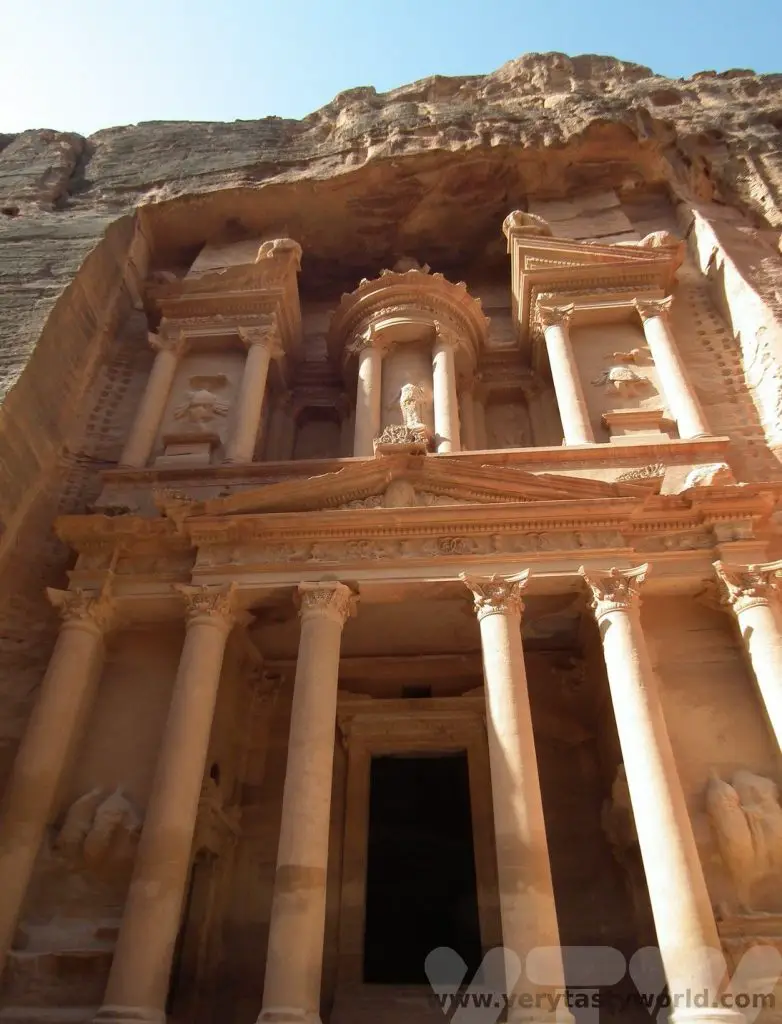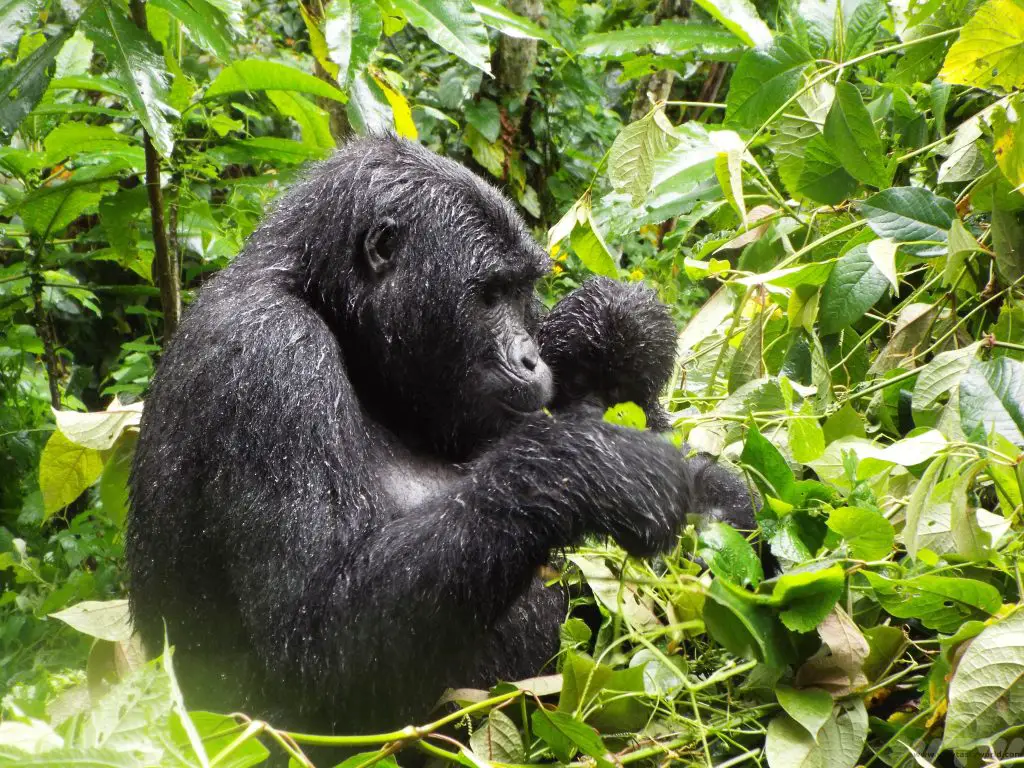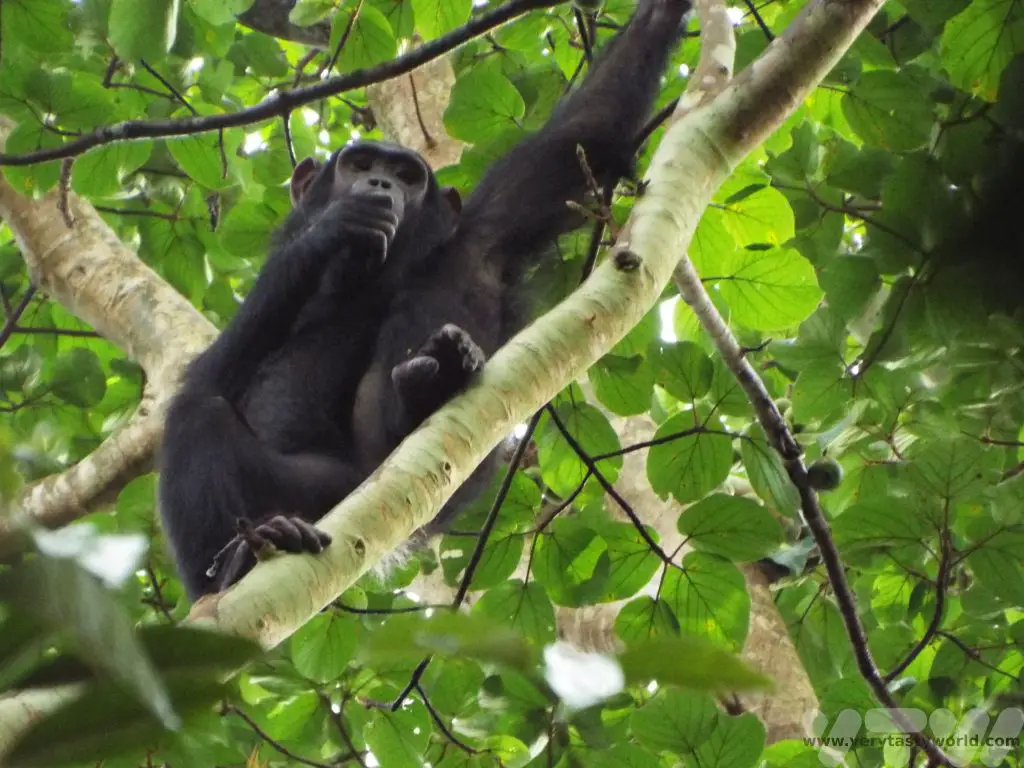Home » Posts tagged 'Africa'
Tag Archives: Africa
Tourist Attractions In Ethiopia
Ethiopia is a country we had long wanted to visit. When we visited Armenia in the late 1990s a number of people we met were travelling there because they seemed – to us youngsters – to have visited everywhere else. On a trip to the beautiful Armenian rock-hewn Geghard Monastery a couple told us about the underground churches of Lalibela and in that moment Ethiopia was added to the To-Visit list. It would be many years before we could make the journey but we found a local company who were able to offer us a tour.
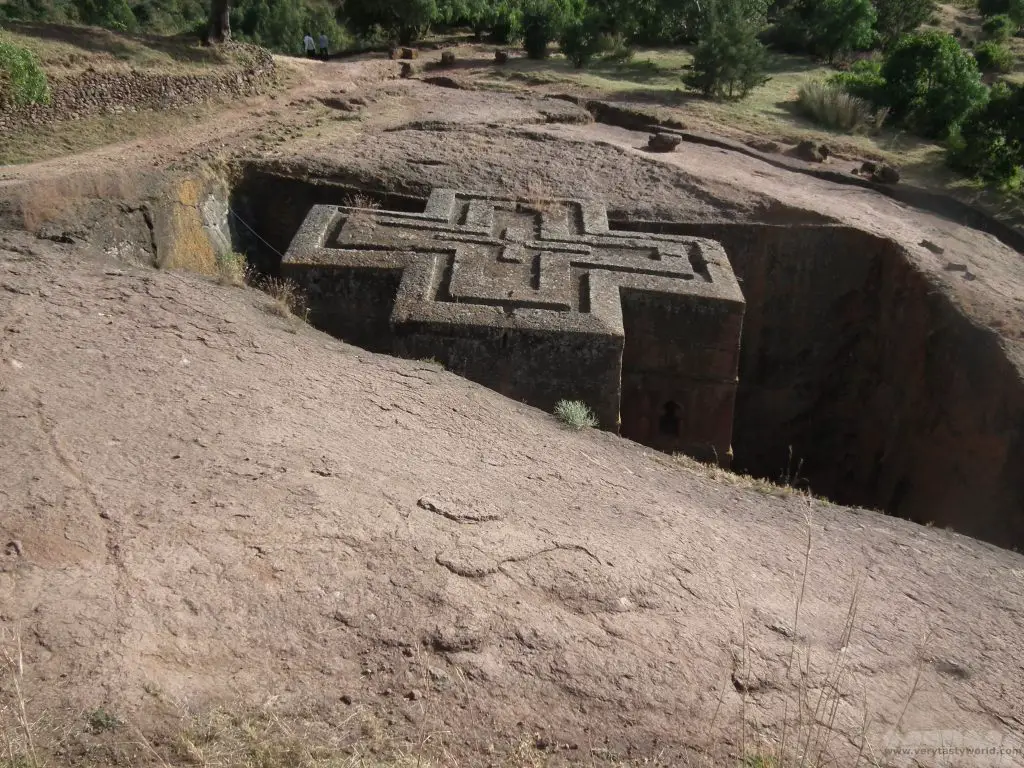
Although it was Lalibela that piqued our interest, we discovered that this wonderful country has so much more to offer than its star attraction. With a rich history, stunning landscapes and amazing wildlife, here is our guide to the tourist attractions in Ethiopia.
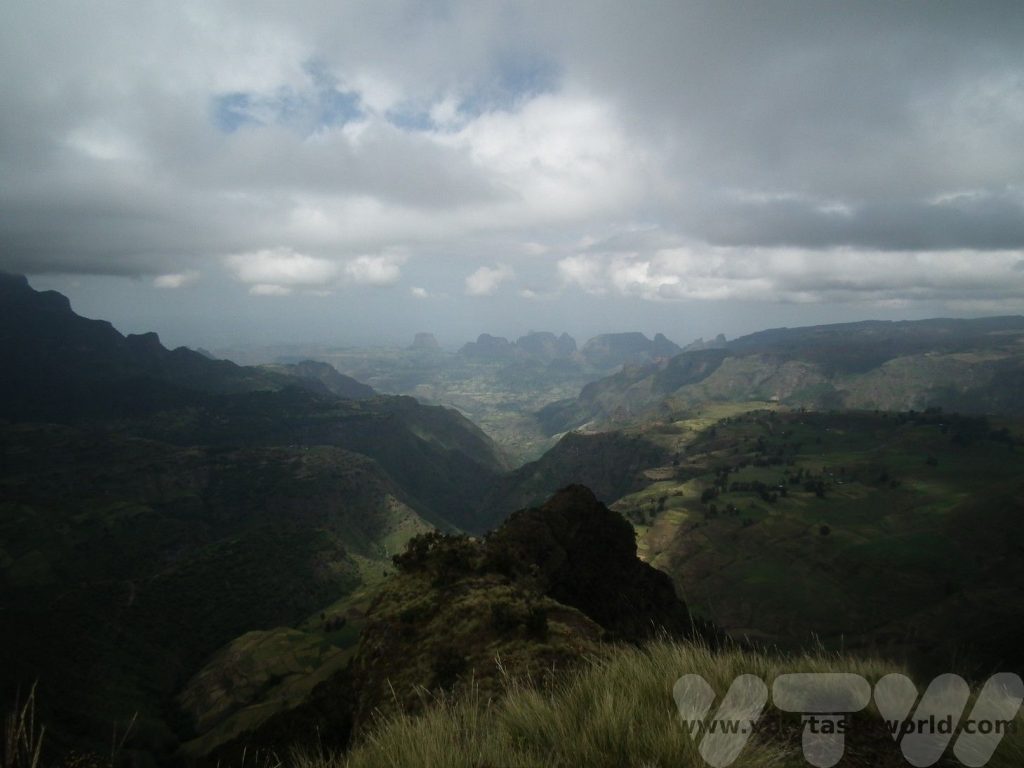
A Northern Ethiopia Itinerary
Ethiopia is huge. Our itinerary covered some of the best historical sites and spectacular landscapes in the northern part of the country. Although the route involved a lot of driving, we also needed to fly between key locations. This itinerary took 13 days to complete. This post is intended to provide an overview of the tourist attractions. We have some other posts on the blog that provide more detail about some of the places we visited.
Addis Ababa
We started off in Addis, Ethiopia’s sprawling capital city. Emperor Menelik’s third wife Empress Taytu Betul settled in the region in 1886. Eventually the emperor established himself there in 1887 and the city started developing. Addis became the capital in 1889 after It has continued to expand to this day. Its name means ‘new flower’. It is a lively, bustling city and a centre of commerce. The Merkato district is home to the largest open market in Africa. There are plenty of interesting places to visit .
National History Museum
This museum houses a collection of artefacts, set out in chronological order, depicting Ethiopia’s long and fascinating history.
One of the most interesting exhibits is that of ‘Lucy’ – a 3.2 million year old skeleton, who was discovered in the mid-1970s and became enormously famous as the oldest human. Lucy is no longer the oldest since ‘Ardi’ was discovered – she predated Lucy by about 1.2 million years, but she was a local lass as well, suggesting that Ethiopia could well have been the place where humans evolved to stand upright.
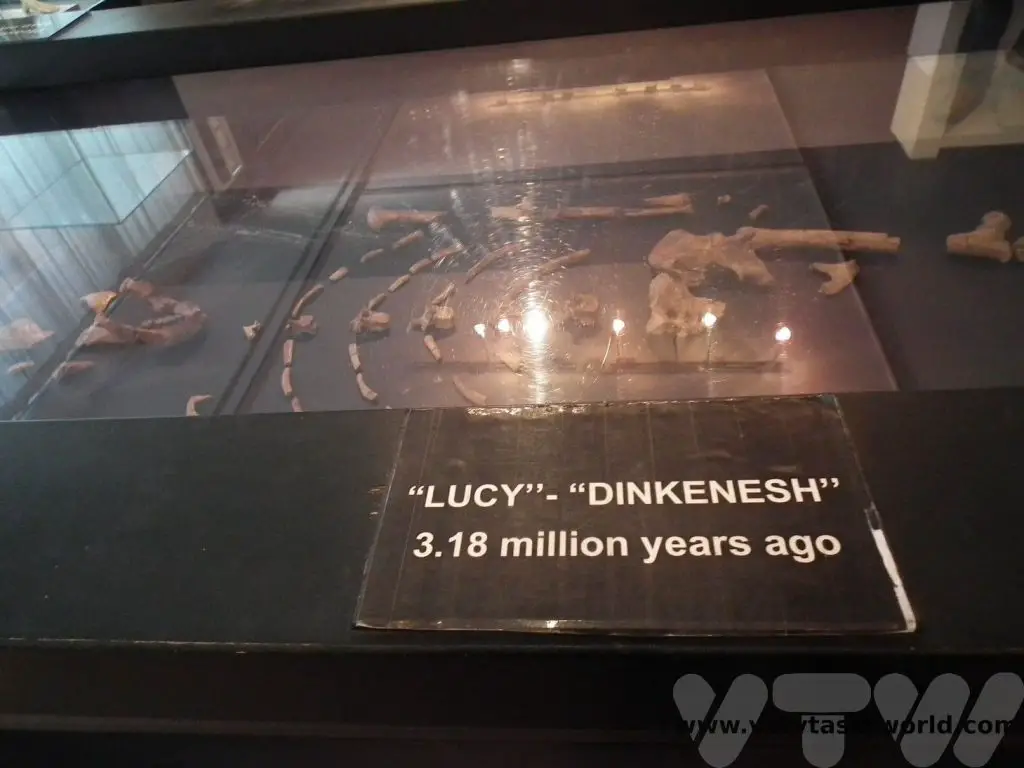
Ethnographic Museum
This museum, located at Addis university, exhibits all sorts of cultural artefacts, including tools, clothing and cooking implements.
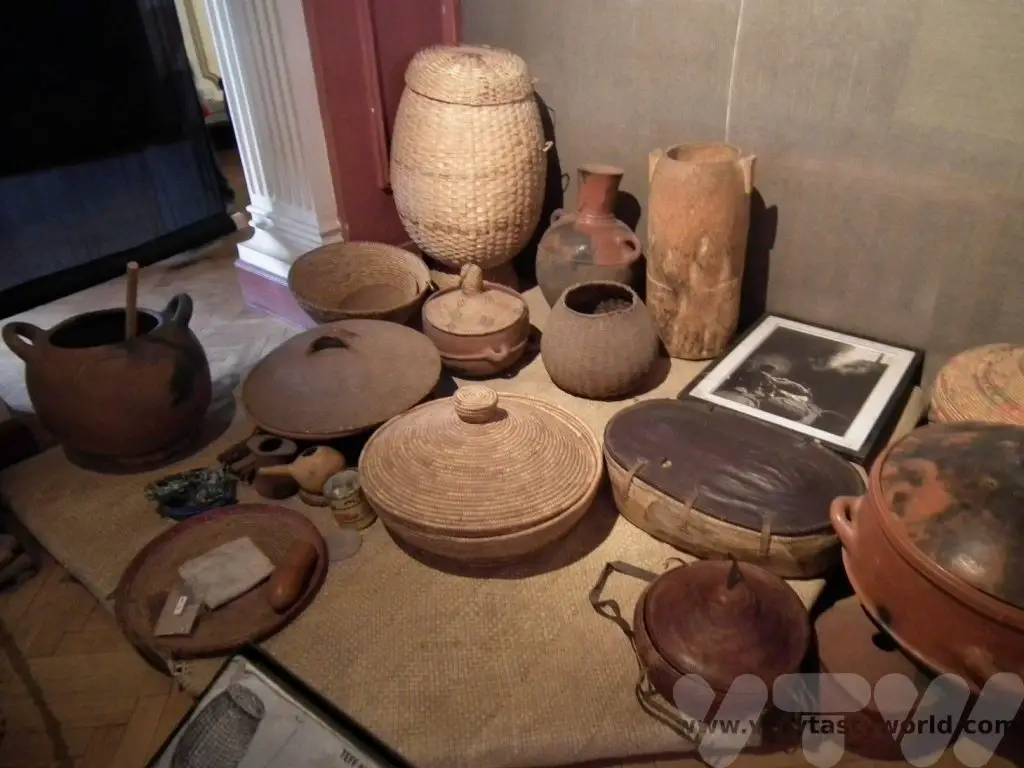
A coffee ceremony set – something that is hugely important in Ethiopian culture.
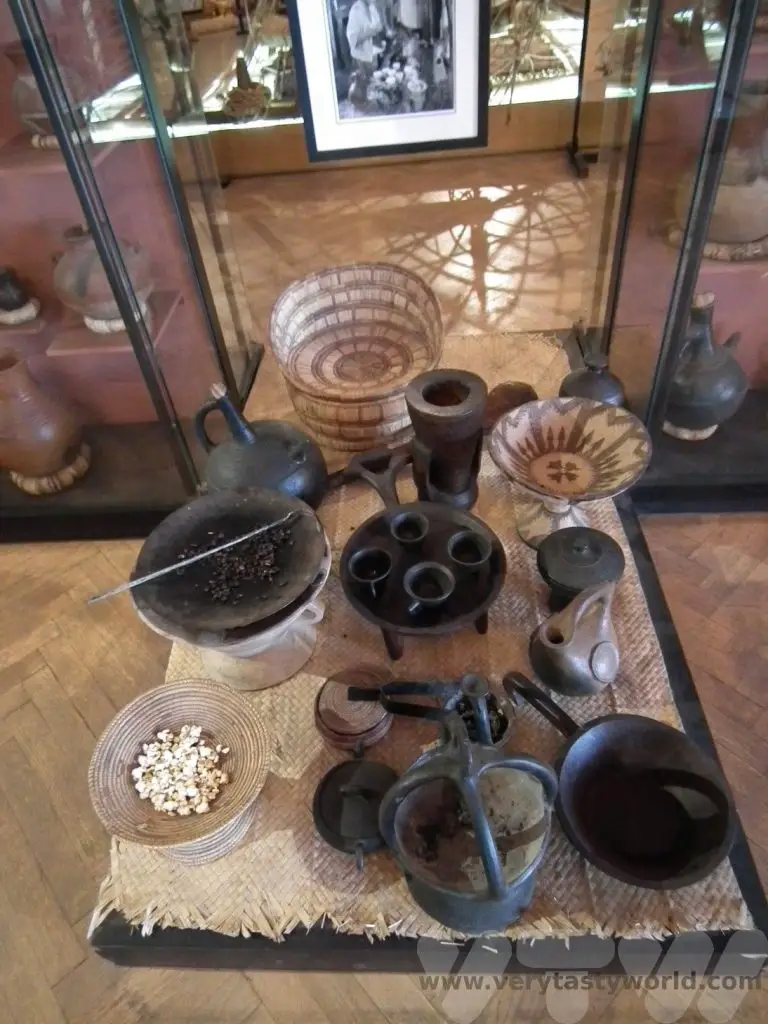
The entrance is interesting – it has a staircase to nowhere constructed by the Italians who occupied Ethiopia from 1935/6 until 1941. Each step represents a year of Mussolini’s power. But at the top of the staircase is the Lion of Judah, which represents the Ethiopian monarchy. It was placed there as an insult to the occupation.
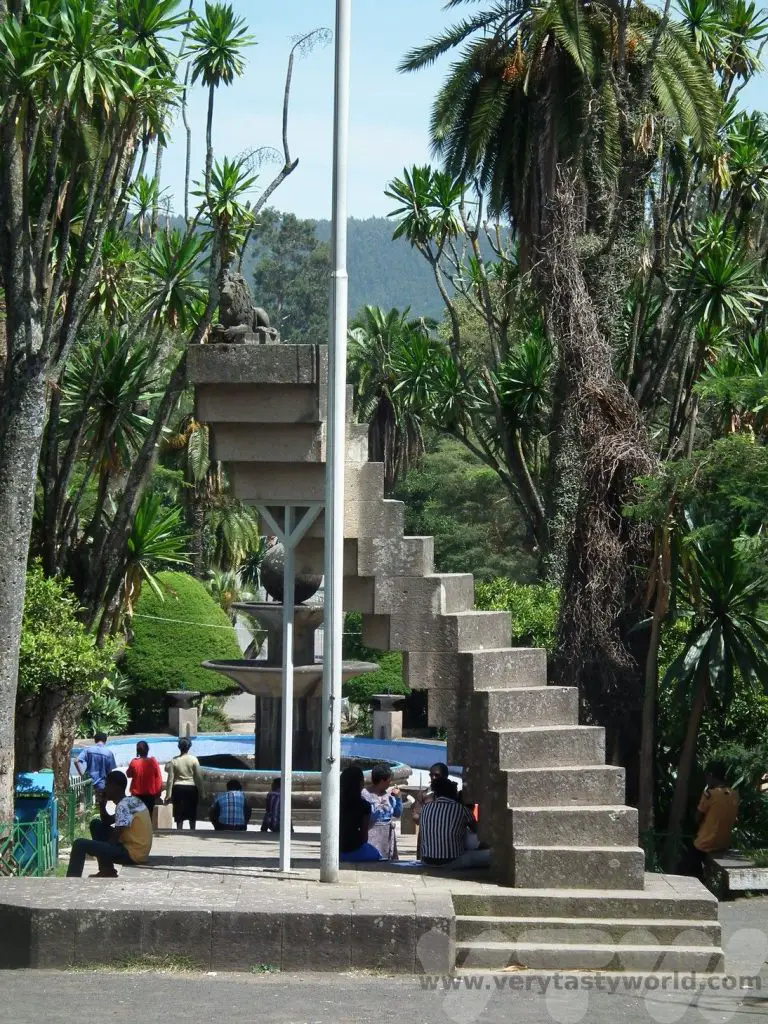
Day trip to Bishoftu
A visit to the resort town of Bishoftu (formerly known as Debrezeit) which is located around 50km southeast of Addis, is a popular day trip. There are five crater lakes to visit. These formed following a number of volcanic eruptions which created the craters that then filled with water over the years.
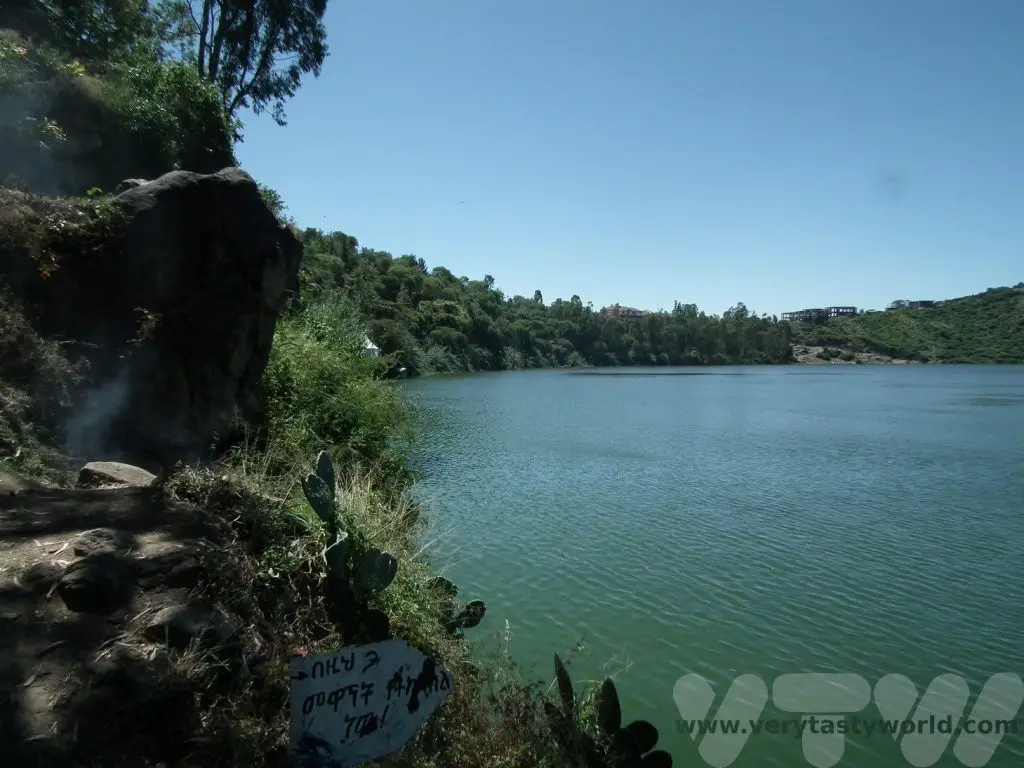
It’s a very pleasant area to go walking and there are plenty of places to enjoy a nice meal with some drinks while observing the plethora of birds that can be found in the area. These cormorants were enjoying drying their wings in the sunshine.
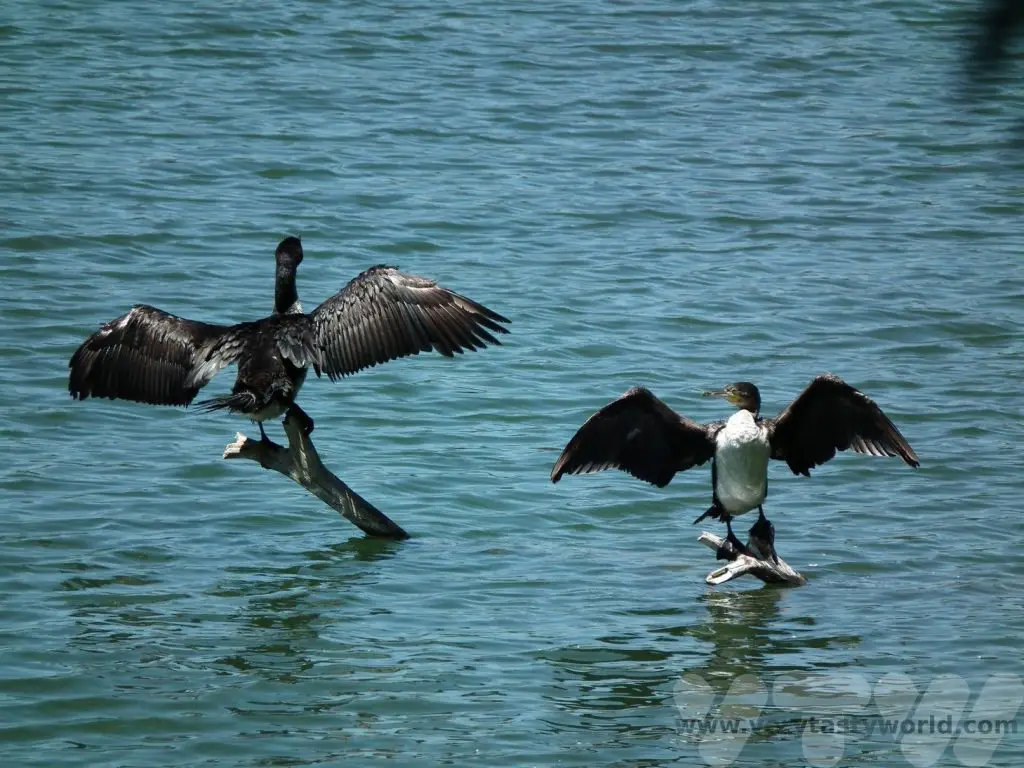
Fly to Bahirdar
Lake Tana
We flew from Addis to the town of Bahirdar. Its main attraction is Lake Tana which is the source of the Blue Nile. It’s a lovely place to visit where you can see a variety of wildlife and, of course, the amazing Blue Nile waterfall.
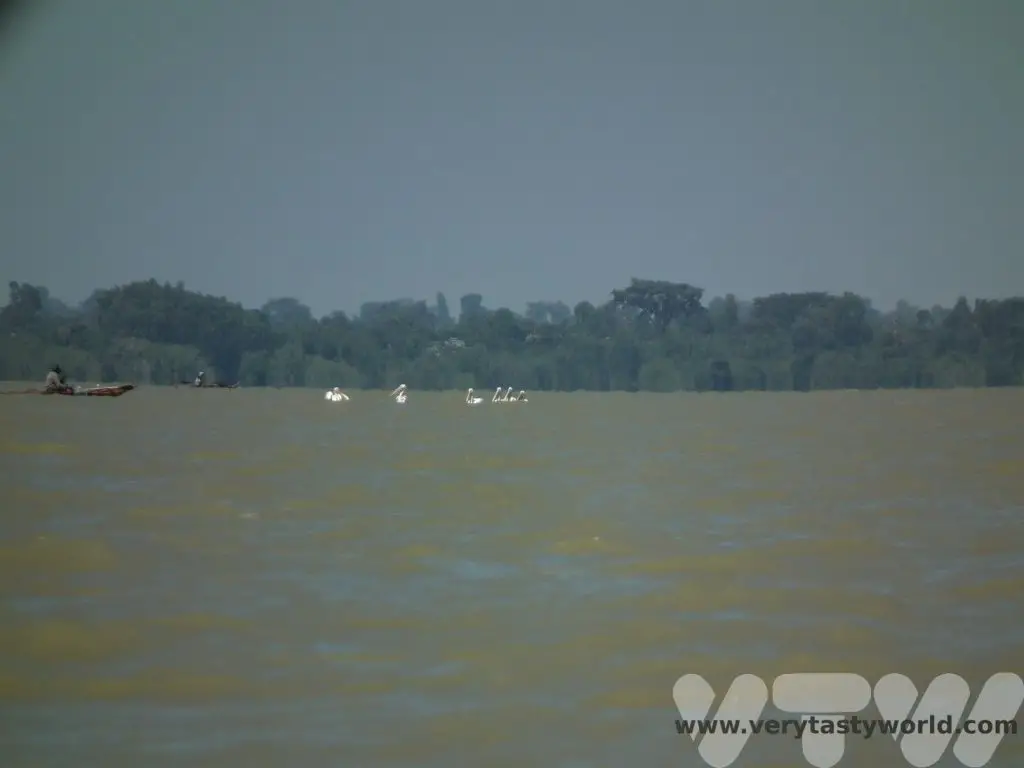
A boat trip across the lake took us to the the Zege peninsualar where we visited the Ura Kidanne Mehret convent. This is a living church where services still take place.
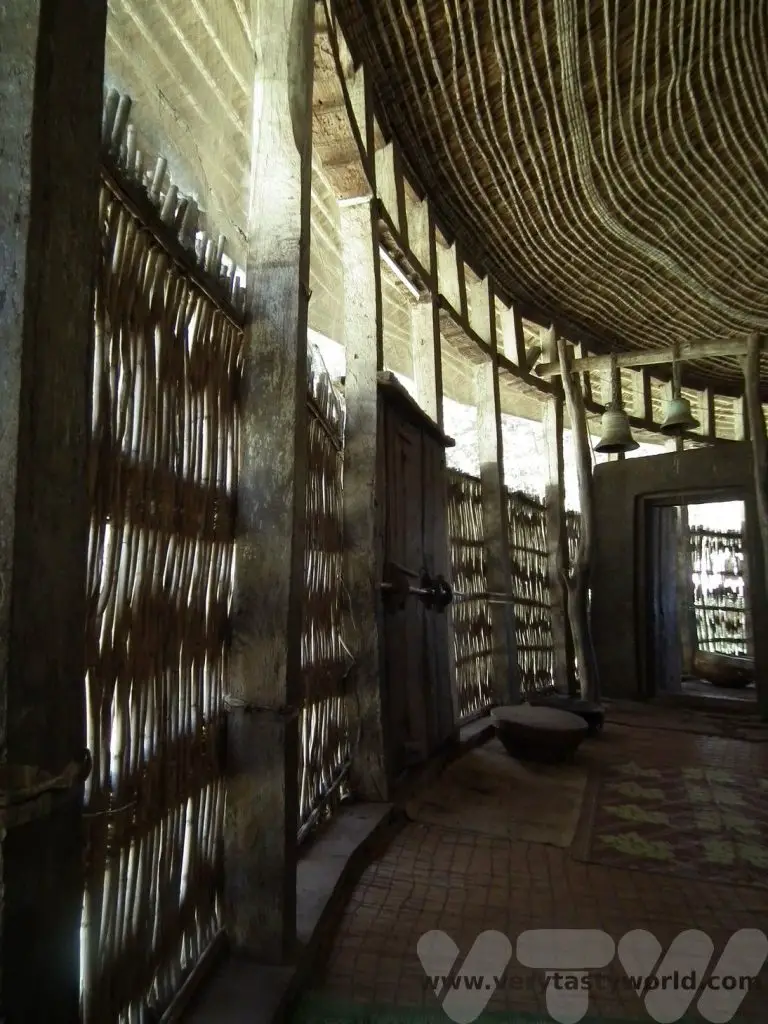
The structure is circular and the inside is decorated with beautiful centuries-old murals, many painted by Alaga Engida. We would see these distinctive designs through out this region.
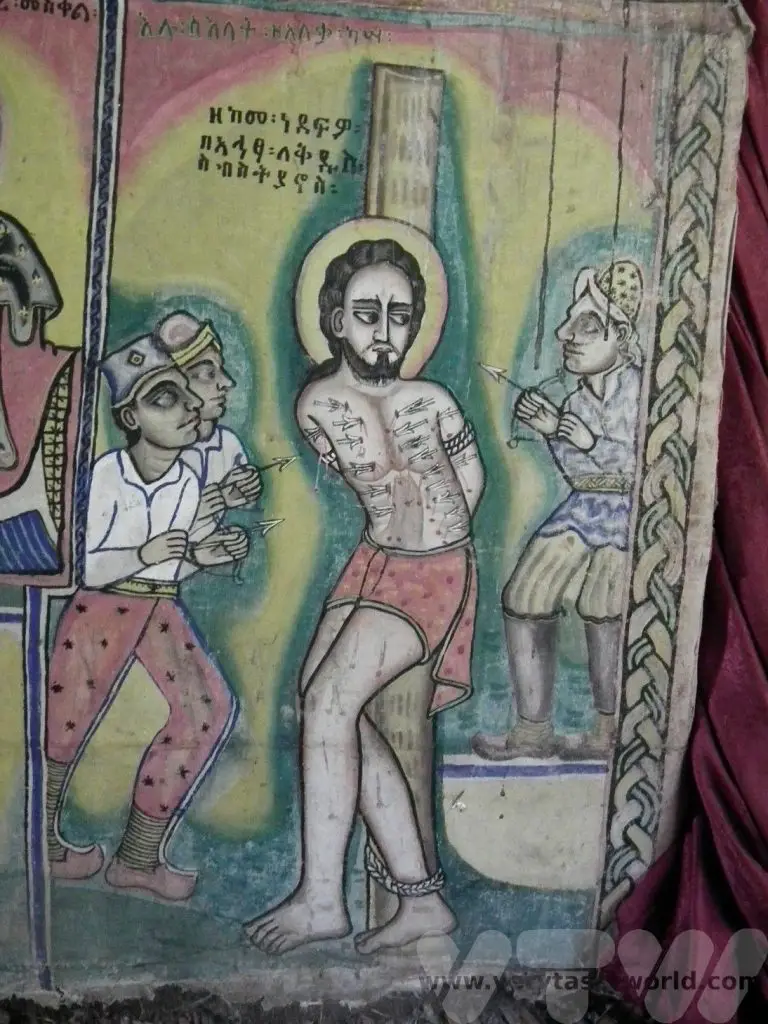
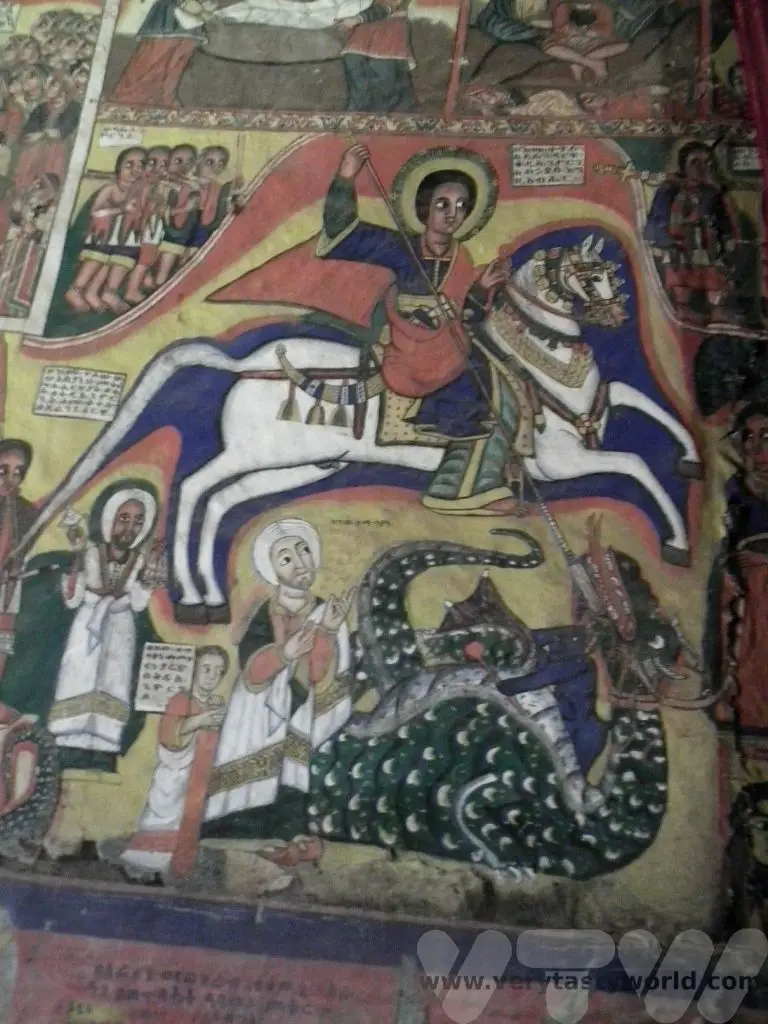
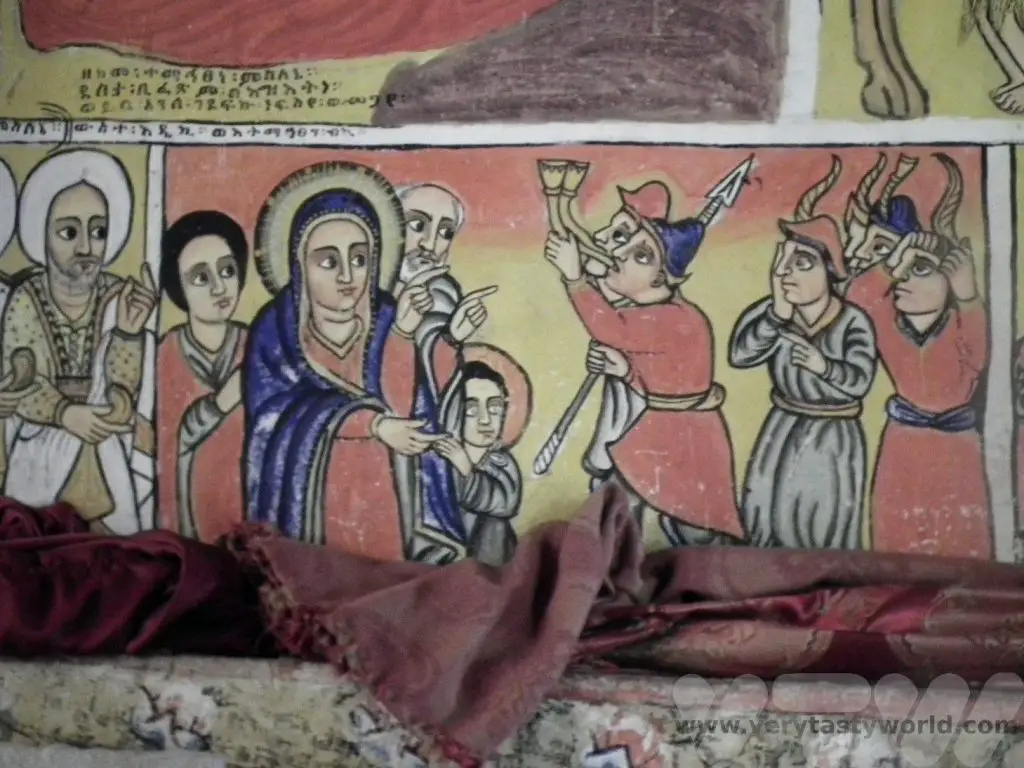
We saw lots of wildlife on the boat trip on the way back.
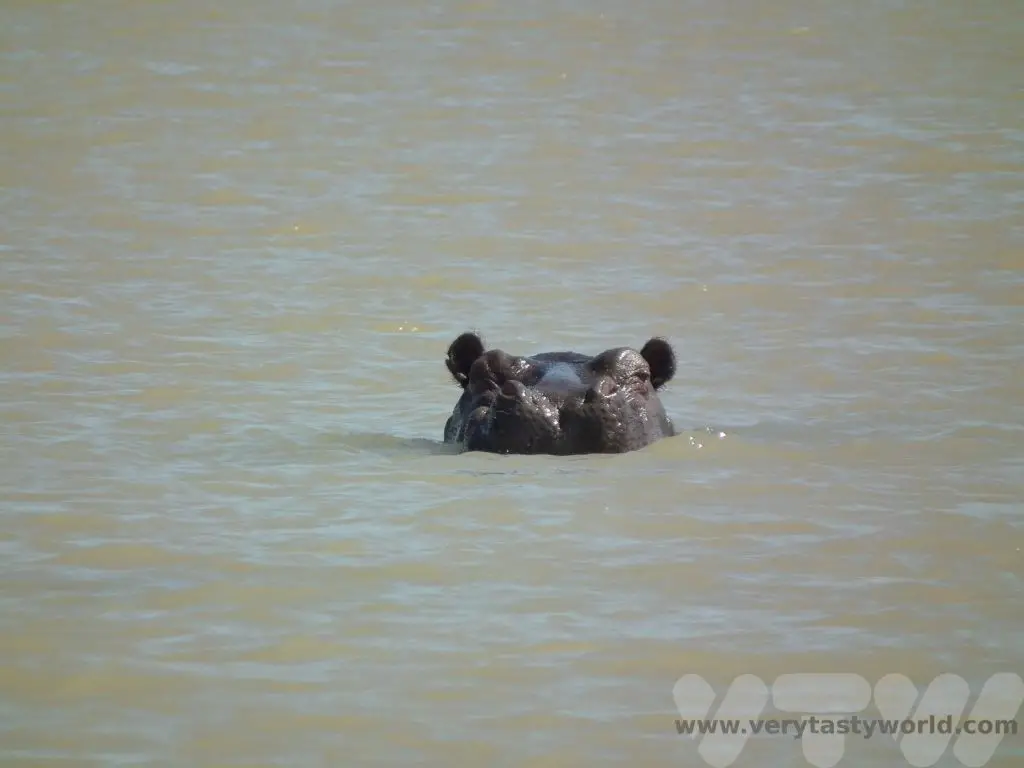

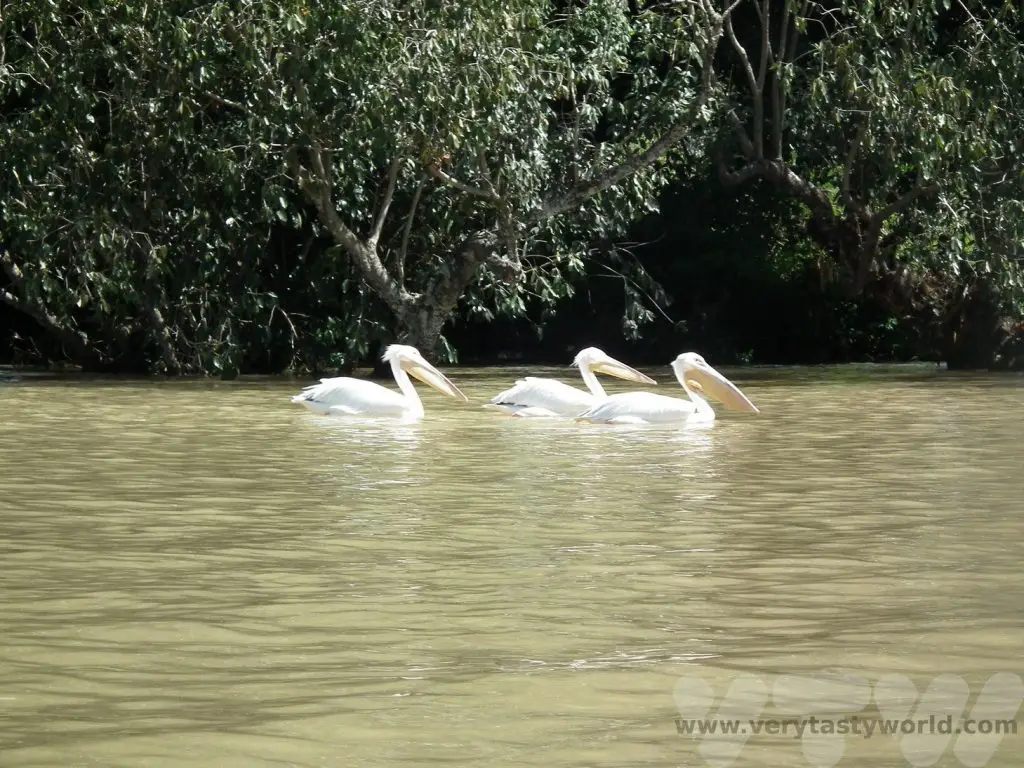
Lake Tana is the source of the Blue Nile and is located around 30 km from the lake itself is the Blue Nile waterfall. The 42m high falls are known as Tis Abay, meaning ‘great smoke’ in Amharic, which is a far more romantic name than Blue Nile Waterfall. The moniker is highly appropriate- they are spectacular. But it’s worth noting that they are spectacular in the rainy season. There is a hydro-electric power station which regulates much of the water flow these days, so it’s worth checking whether you are likely to see a cascade or a dribble.
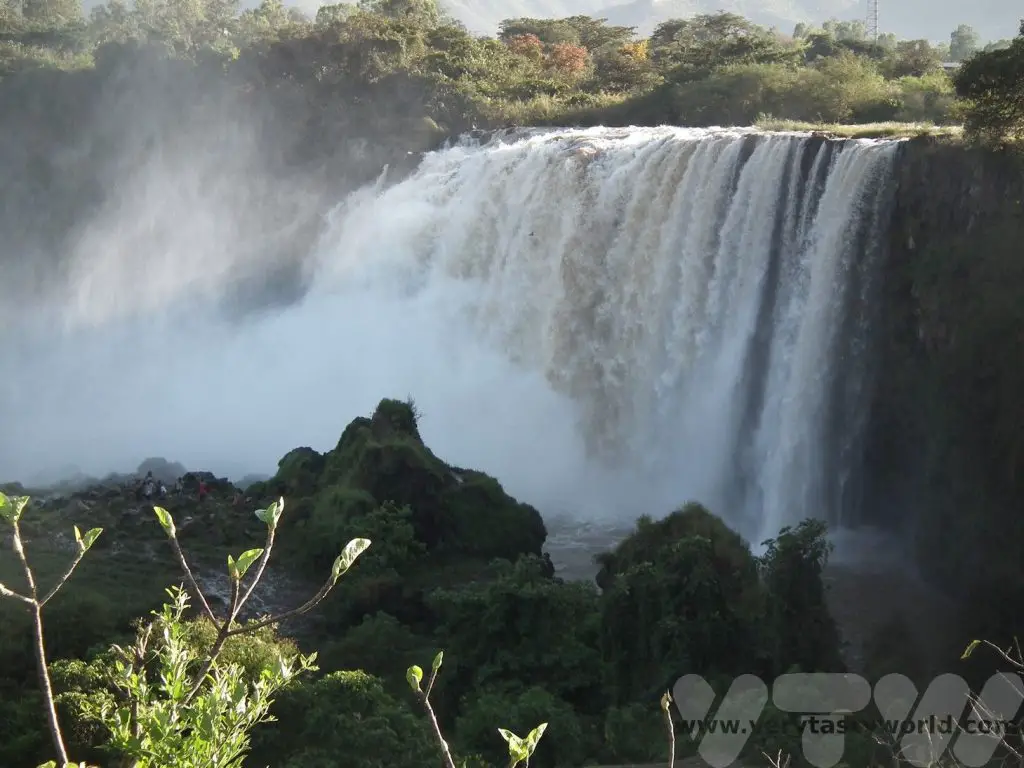
Drive to Gondar
The City of Gondar
Gondar sounds like a city from Lord of the Rings and also looks like a city from Lord of the Rings. It has a grand history. It was the central location of the Ethiopian government and home of the Ethiopian emperors for several centuries and is a UNESCO heritage site.
Established by Emperor Fasilides in the 17th century, the city of Gondar boasts a number of castles and palaces that were residences to successive Ethiopian leaders. The buildings are particularly interesting because they resemble European mediaeval castles.
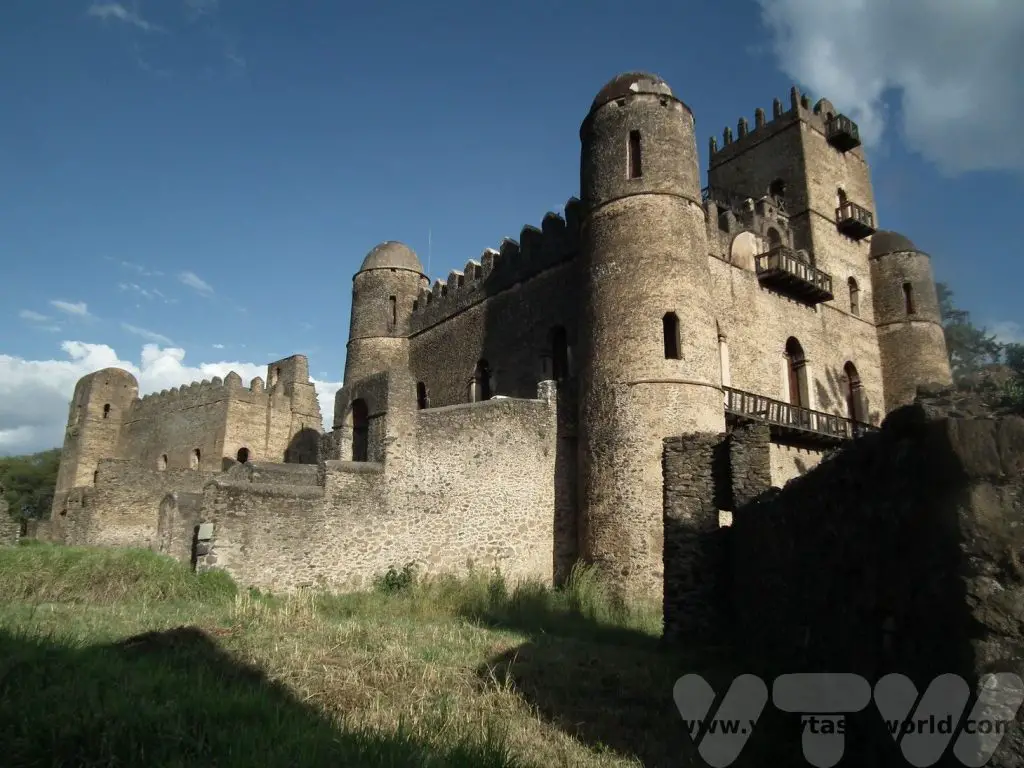
The history of the emperors is fascinating. There are all sorts of tales of skullduggery – poisonings, murders and mysterious deaths. It is possible to explore the ruins of the castles, palaces and royal baths.
Fasilides was emperor of Ethiopia from 1632 until 1667 and decided to establish Gondar as the capital of Ethiopia. He built the Royal Enclosure which was further developed by his successors. A little way out of town he also constructed a remarkable bath complex, compete with bathing pool, tower and bridge. It is considered a sacred site to this day.
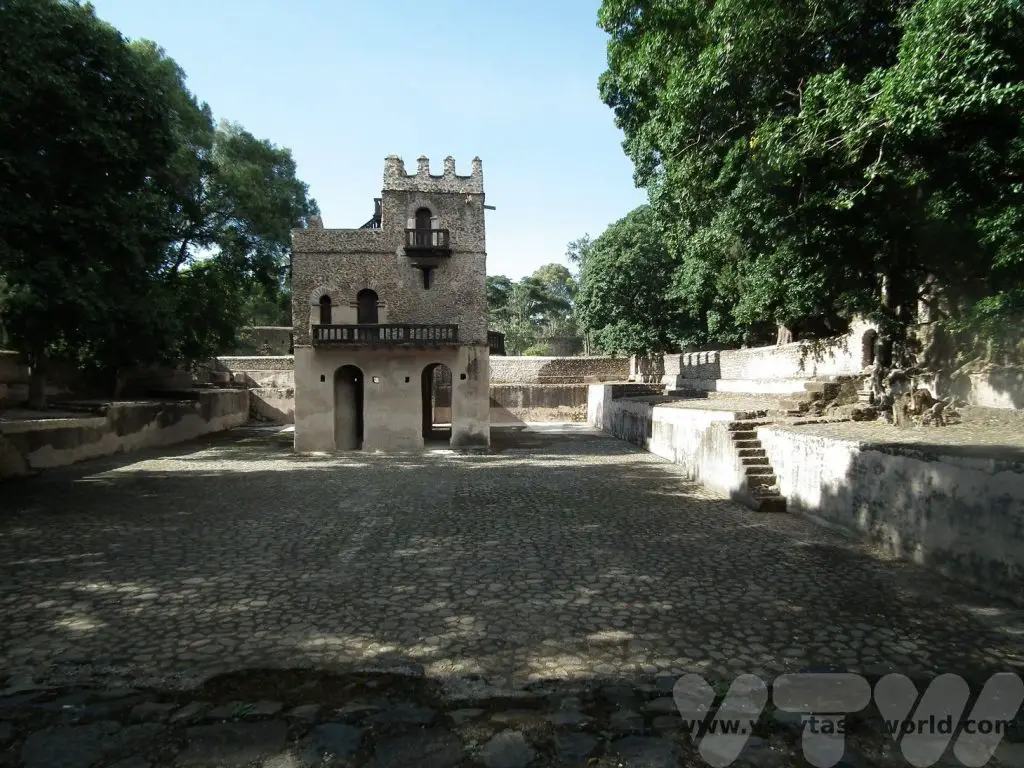
Simien Mountains
On leaving Gondar we got into a van and had a bumpy ride to the spectacular Simien mountains national park. This is another UNESCO world heritage site. There are plenty of opportunities to go hiking amidst spectacular scenery and have a drink at the highest bar in Africa.
In the Simien mountains you can walk among wild gelada monkeys in fields scented of wild thyme, a magical experience.

You can read more about the fascinating history of Gondar and see the beauty of the Simien mountains.
Fly to Lalibela
We caught a flight from Gondar to Lalibela where we spent a couple of days exploring the astonishing rock-hewn churches. They were as spectacular as we had been promised many years before.
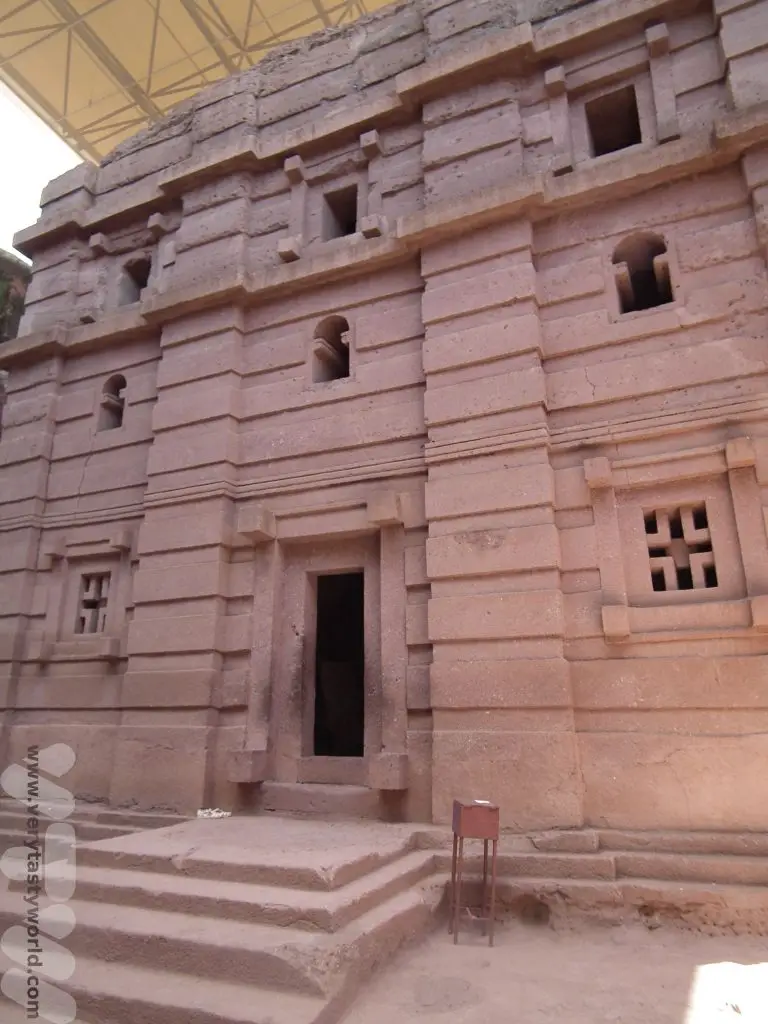
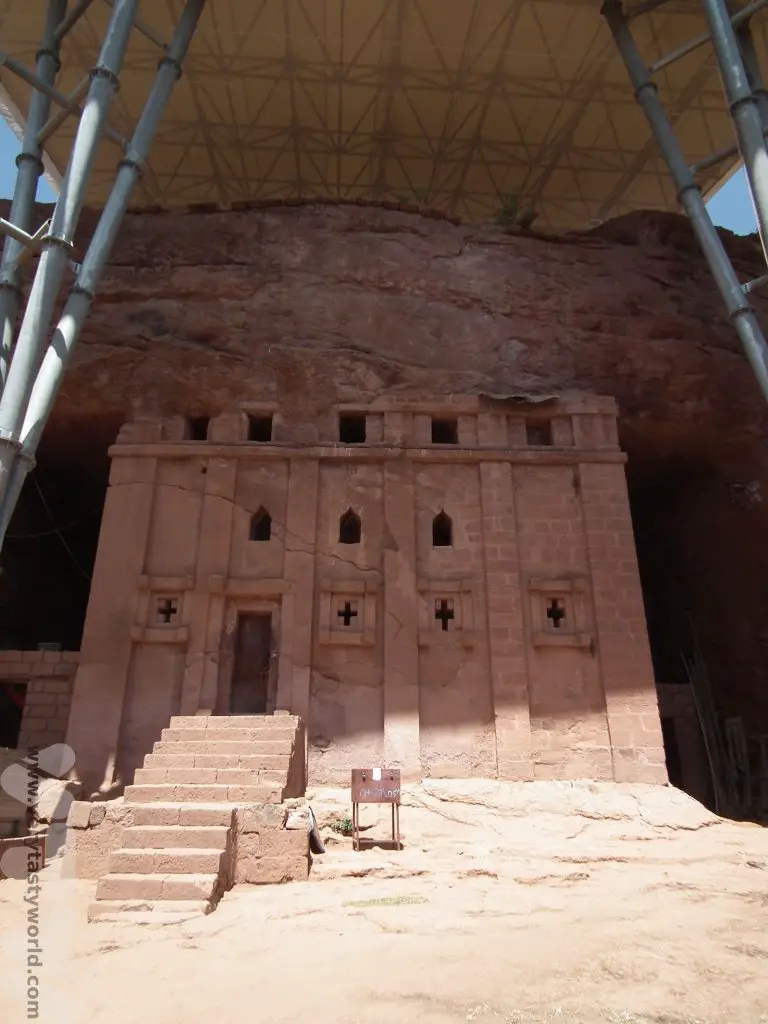

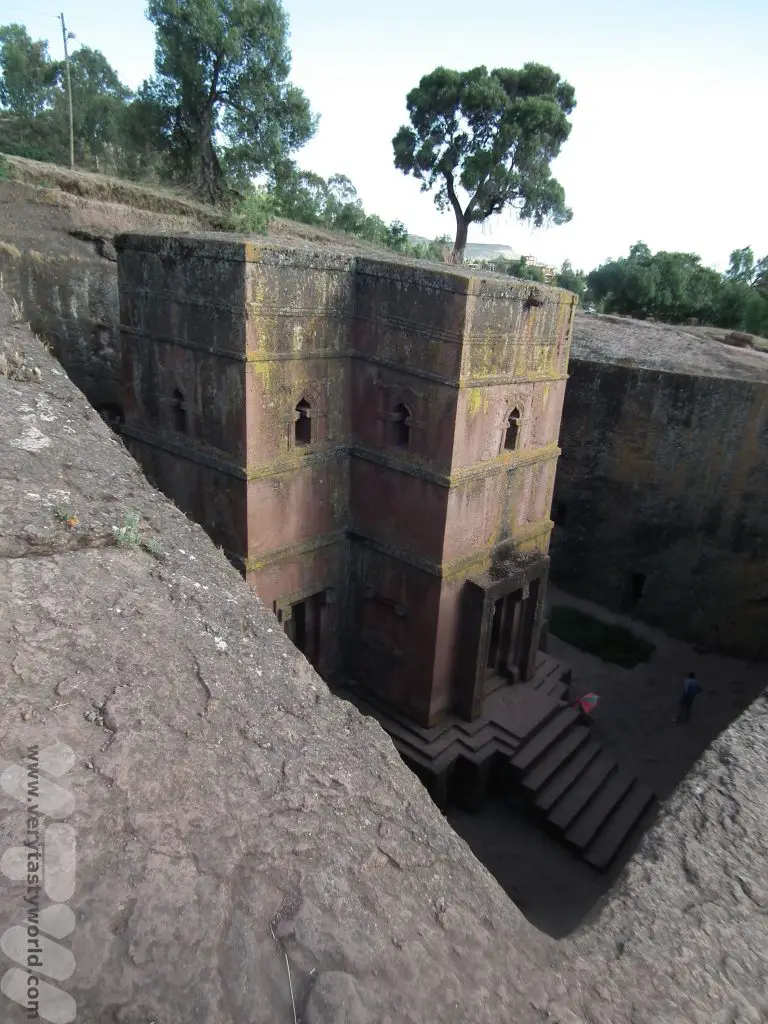
Another UNESCO world heritage site the churches date from the 7th to the 13th centuries. They are remarkable because rather than being constructed from the ground up, they have been hewn from within the rock, using basic tools such as chisels and hammers, and were built from the top down. This meant that they couldn’t be seen from a distance.
Fly to Tigray
More history beckoned when we flew to the far north of the country to the region of Tigray. Tigray has had a difficult history in recent times. It was the location of the Ethiopian famine of the 1980s, which prompted the Band Aid and Live Aid appeals. And recently it has been engaged in a civil war between the Tigray People’s Liberation Front and the Ethiopian government. A peace treaty was signed in November 2022 and we very much hope that tourism will be able to be revived in the area once more.
Axum
First stop was Axum, which has a history dating back to 400 BCE. It was the capital of the Aksumite empire which ruled the region until the 10th century. It is famous for its towering stelae, obelisks that are around 1700 years old. They were designed as impressive grave markers for royal burial chambers. They are huge – the tallest is 33m. Some of them have fallen and others were taken, notably King Ezana’s obelisk which was transported to Rome after Italy’s occupation of Ethiopia ended.
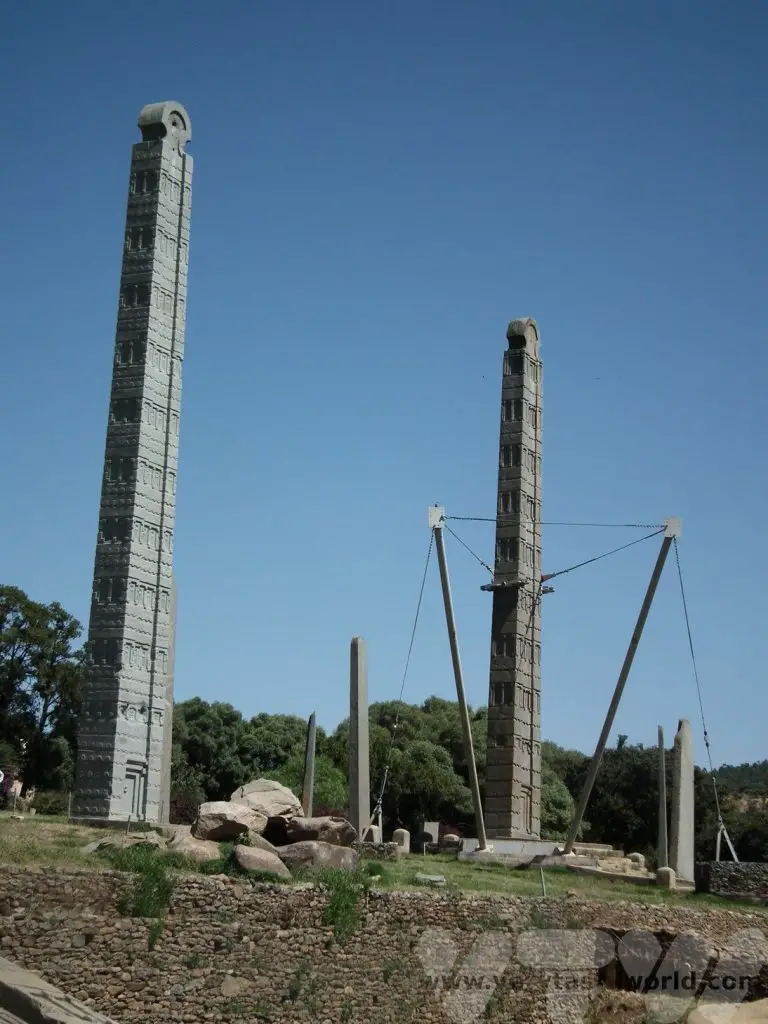
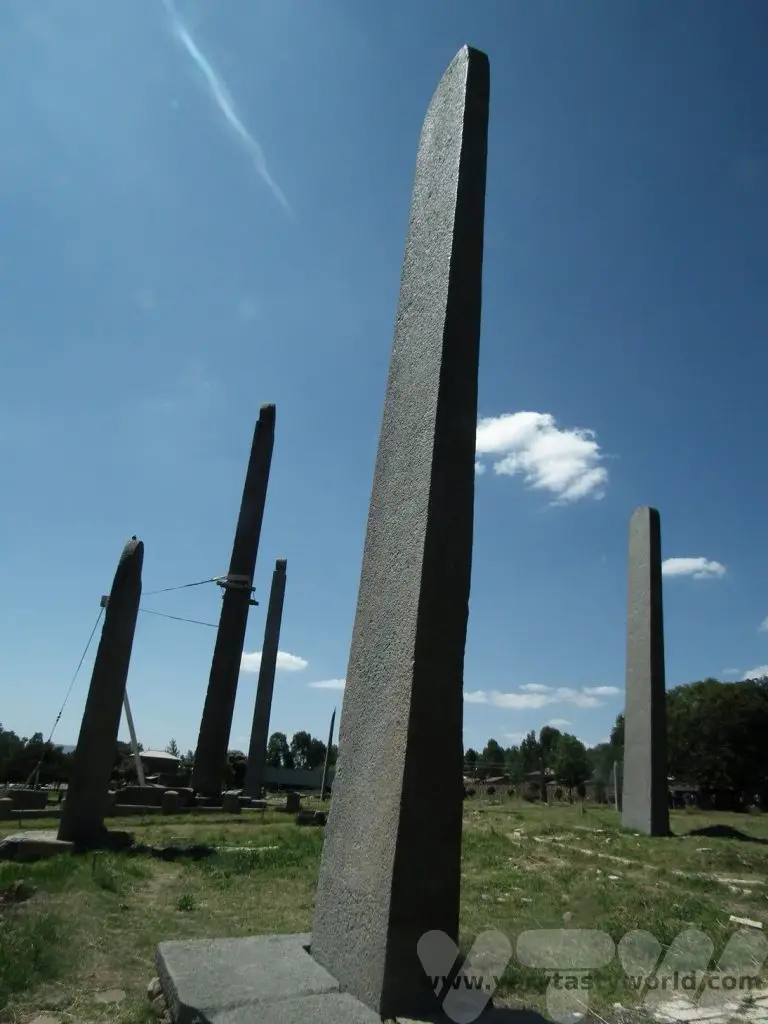
The Aksumite Empire ended in the 10th century and the emperors of Ethiopia moved southwards, eventually settling in Gondar some centuries later, when Fasilides established his government there.
Churches of Our Lady Mary of Zion
Axum is also home to two important churches. The church of Our Lady Mary of Zion was built by Fasilides in 1665. It is rumoured to have housed the Ark of the Covenant.
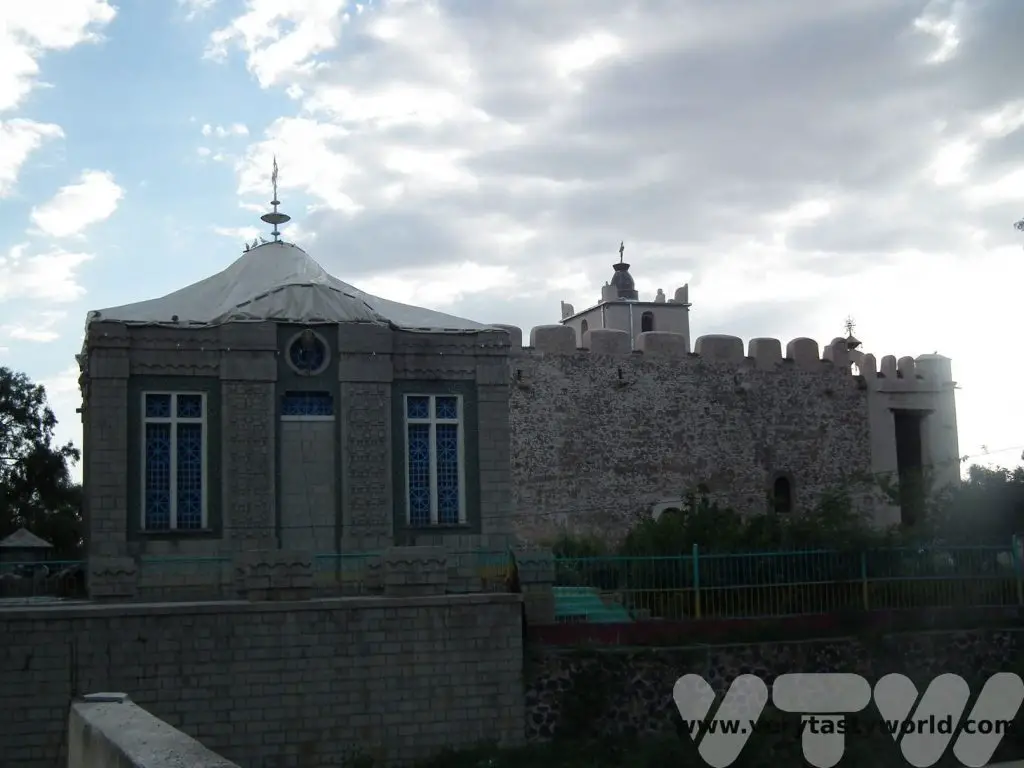
Emperor Haile Selassie built a new cathedral of St Mary of Zion next to the old church. It is possible to enter this church and to watch the services.
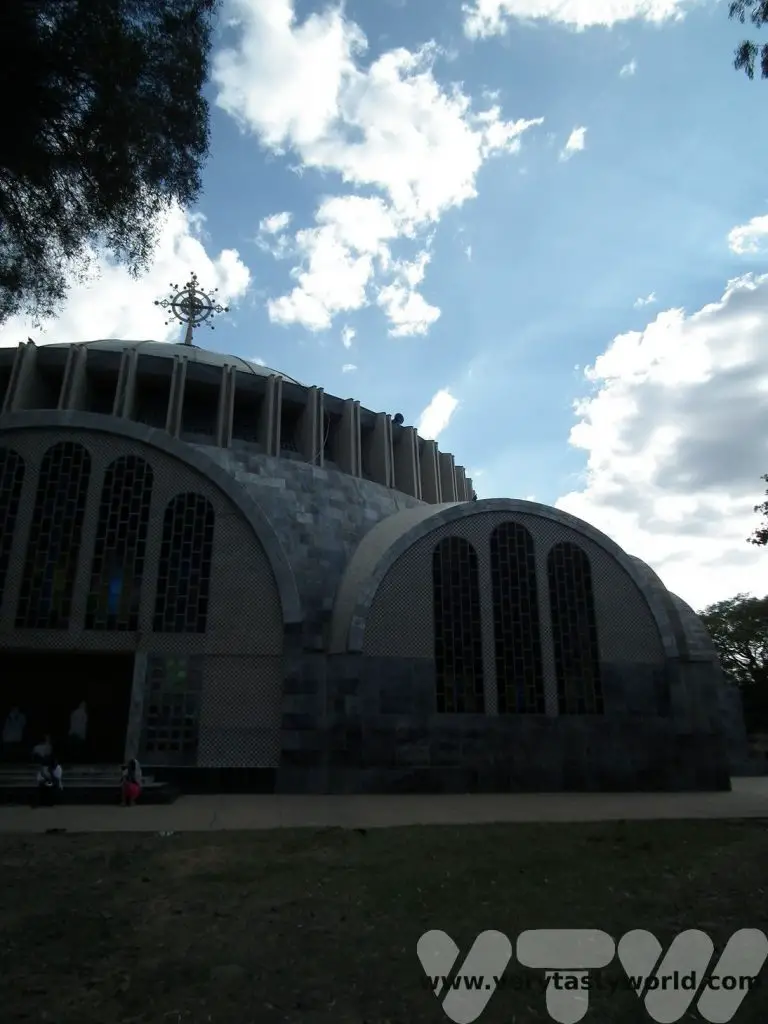
Tombs of the Kings
A few kilometres out of the town of Axum are the Tombs of the Kings which date from the 3rd century.
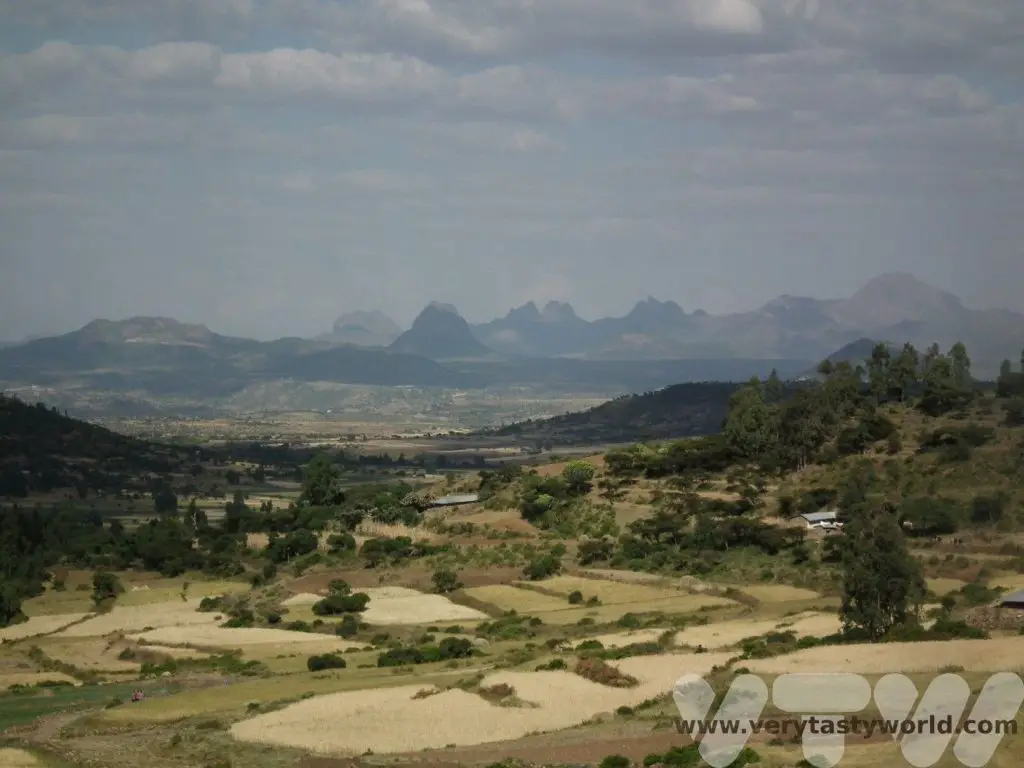
King Kaleb’s tomb is located here. Kaleb was king of Axum between 514–542 CE.
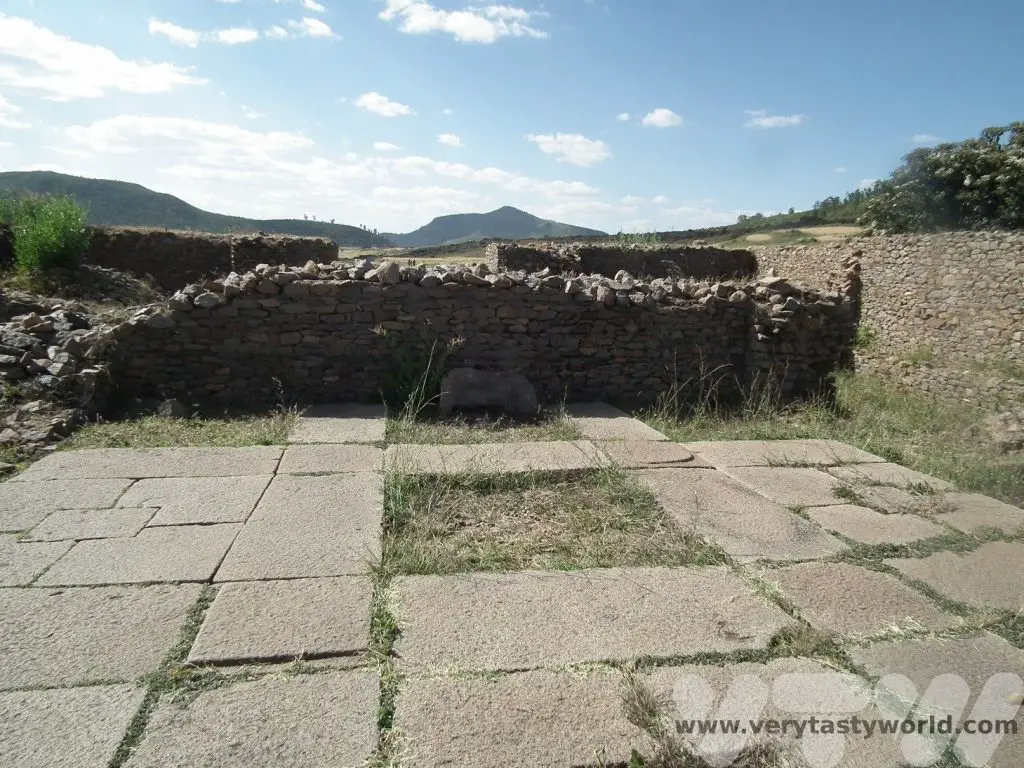
Nearby is the Ezana Stone, a stelae, which shows an inscription in three different languages: Ethiopian Ge’ez, South Arabian Sabaean, and Greek. It’s similar to the Rosetta Stone.
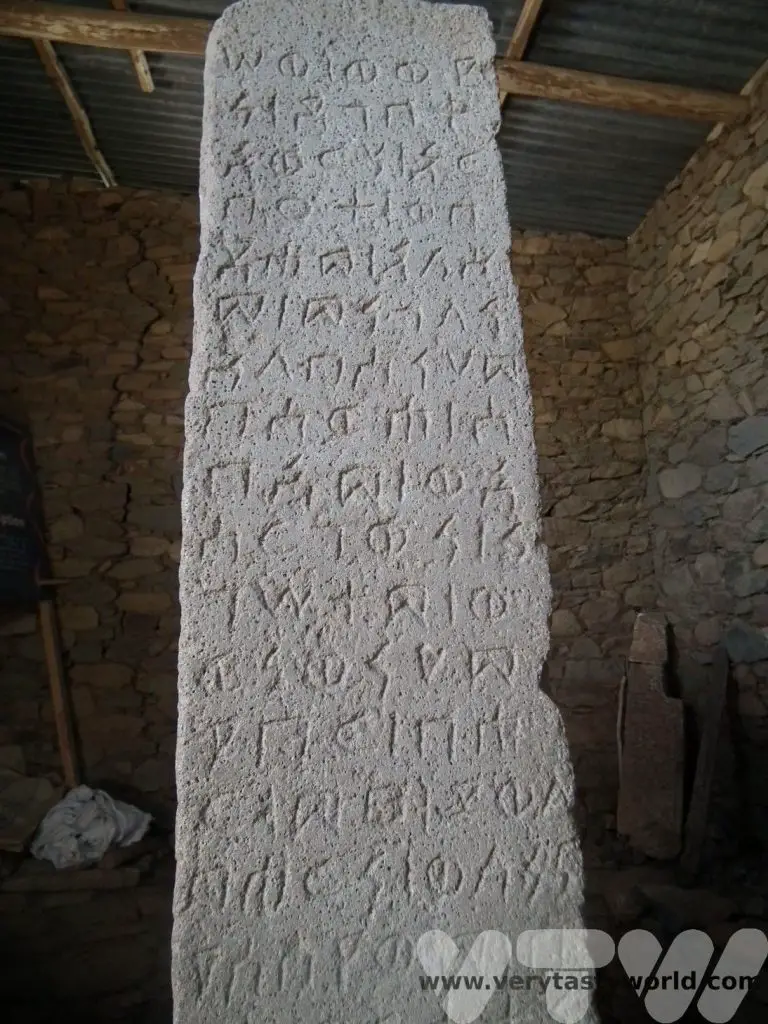
Beware though, the stone is cursed and anyone who touches it is likely to meet an untimely end. (No, we didn’t dare!)
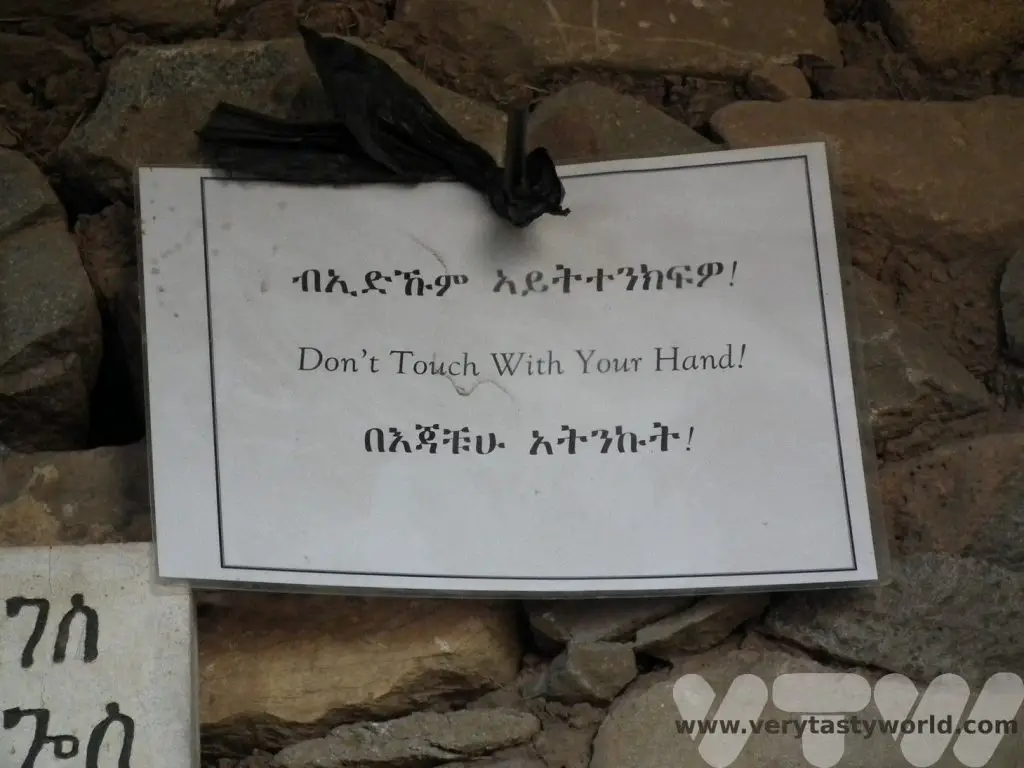
Gheralta
The final stage of our journey through the Tigray region involved a drive across the countryside to Gheralta where we could view the rock churches of Tigray.
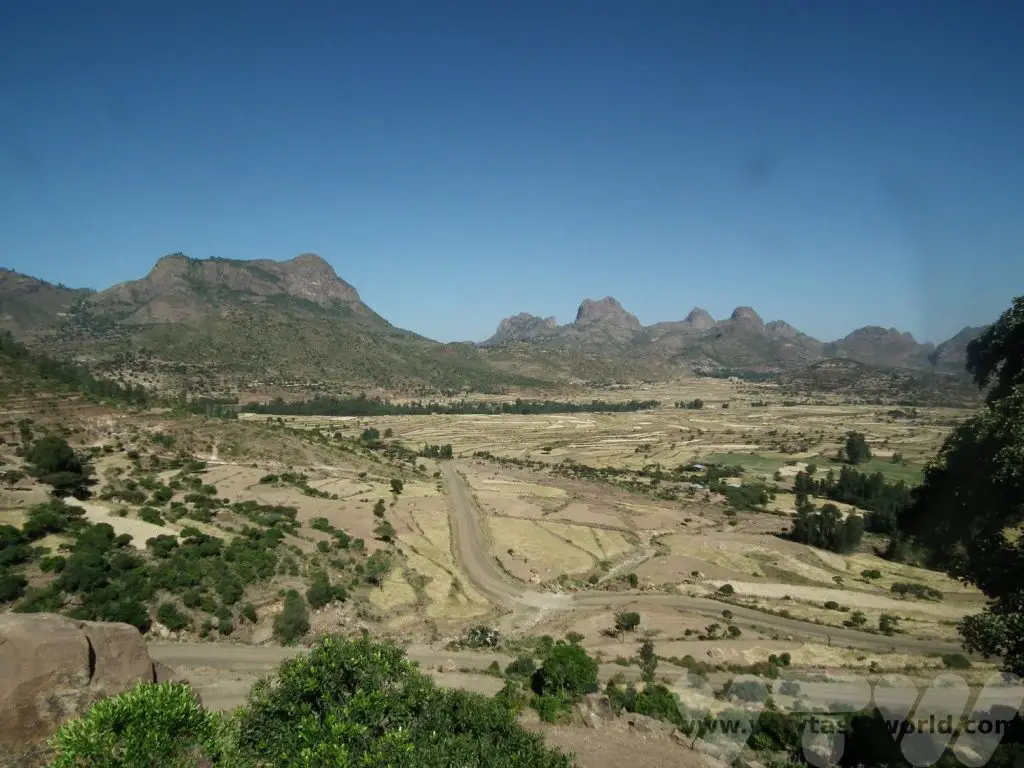
There are over 100 churches in the regions, largely dating from the 6th to the 14th centuries and they are mainly carved into cliff sides or rocky outcrops.
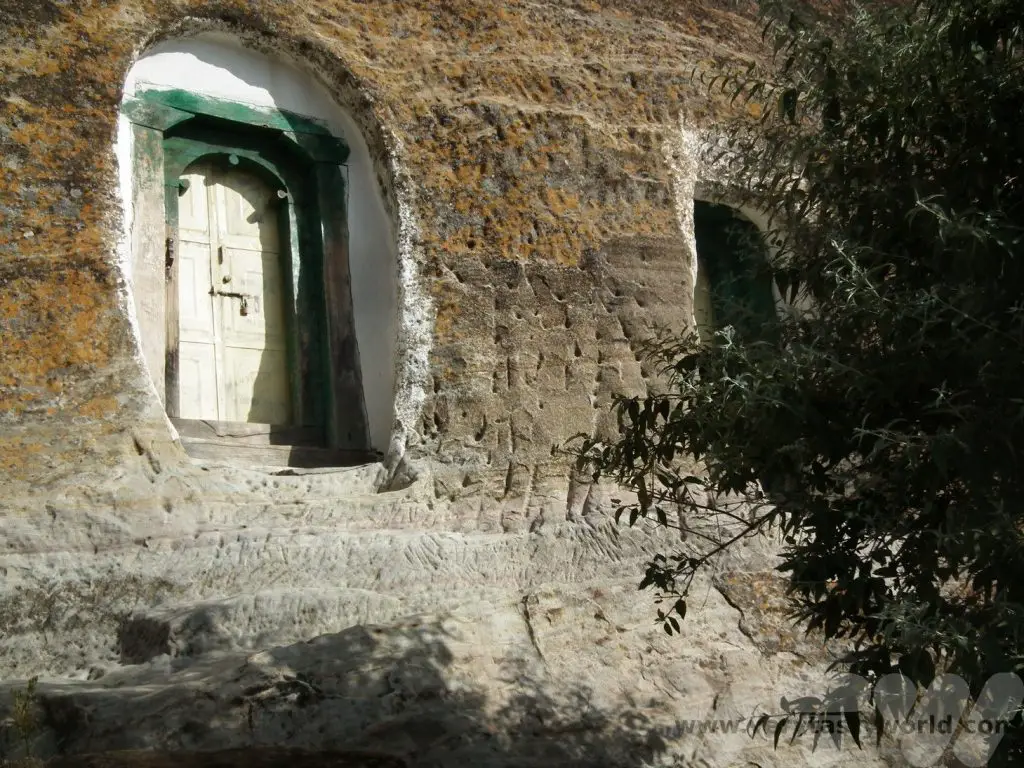
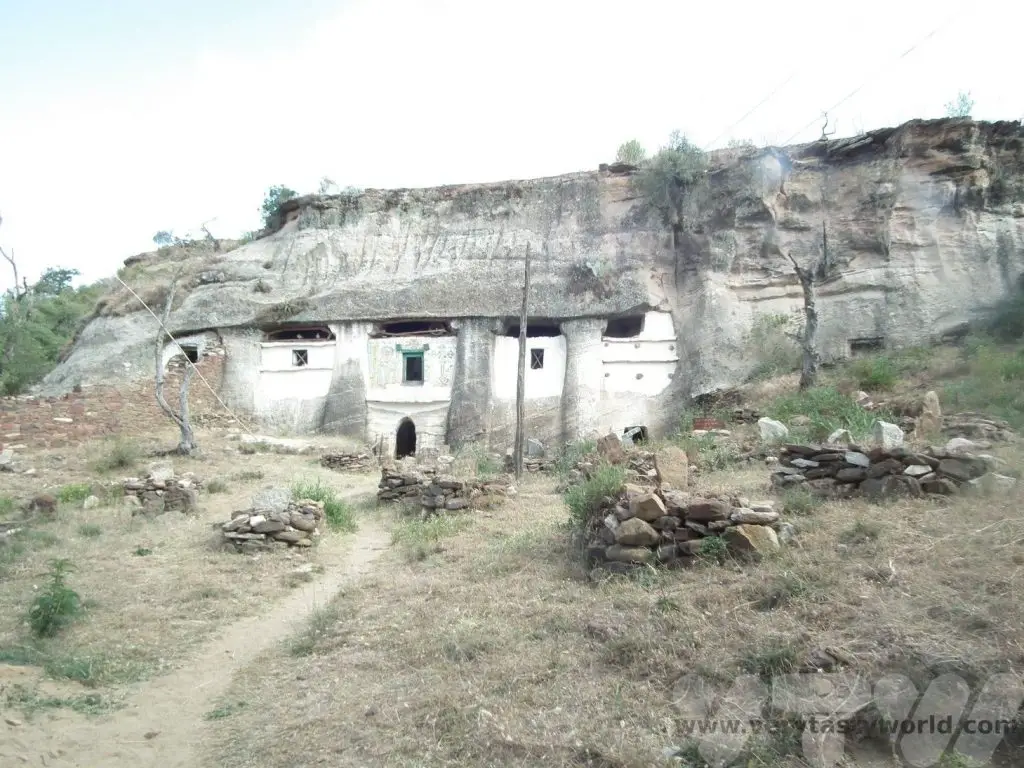
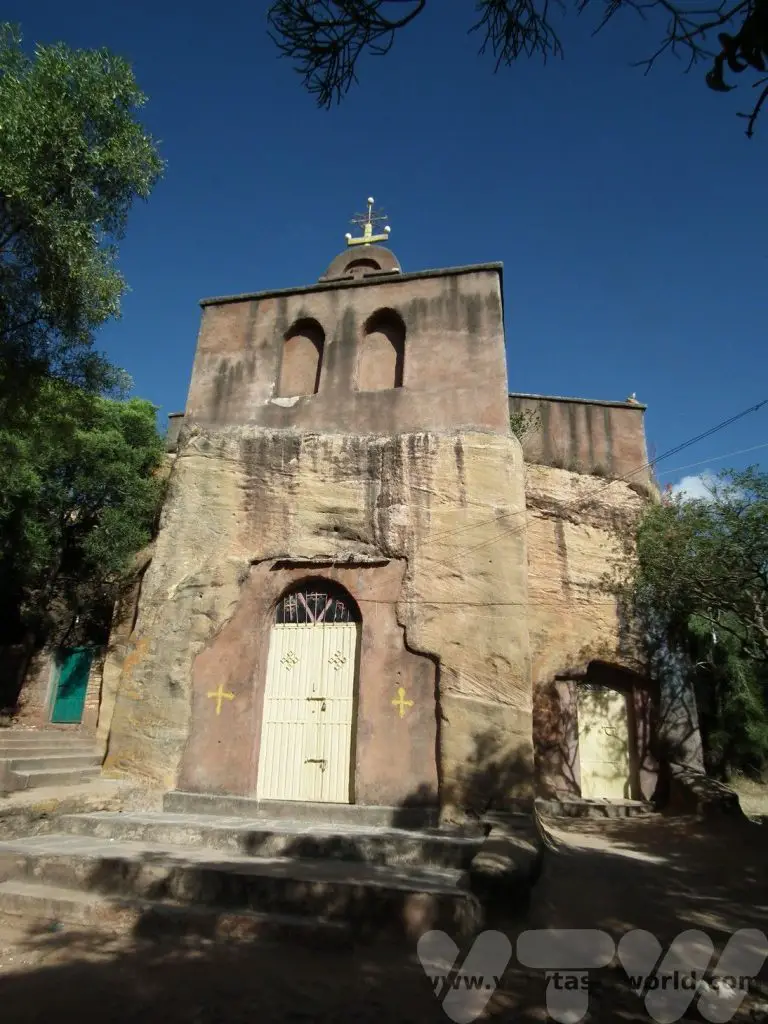
And that concluded our Ethiopian itinerary. We drove to Mekele, the major city in the region, and caught a flight back to Addis before our return home.
Ethiopian Food
Something that intrigued us before we arrived was Ethiopian food: we had absolutely no idea about what to expect. A quick internet search revealed ‘injera’: Ethiopian traditional bread.
We still had no idea what to expect.
Injera is a flatbread that looks like a cross between a dirty dishcloth and a sponge.
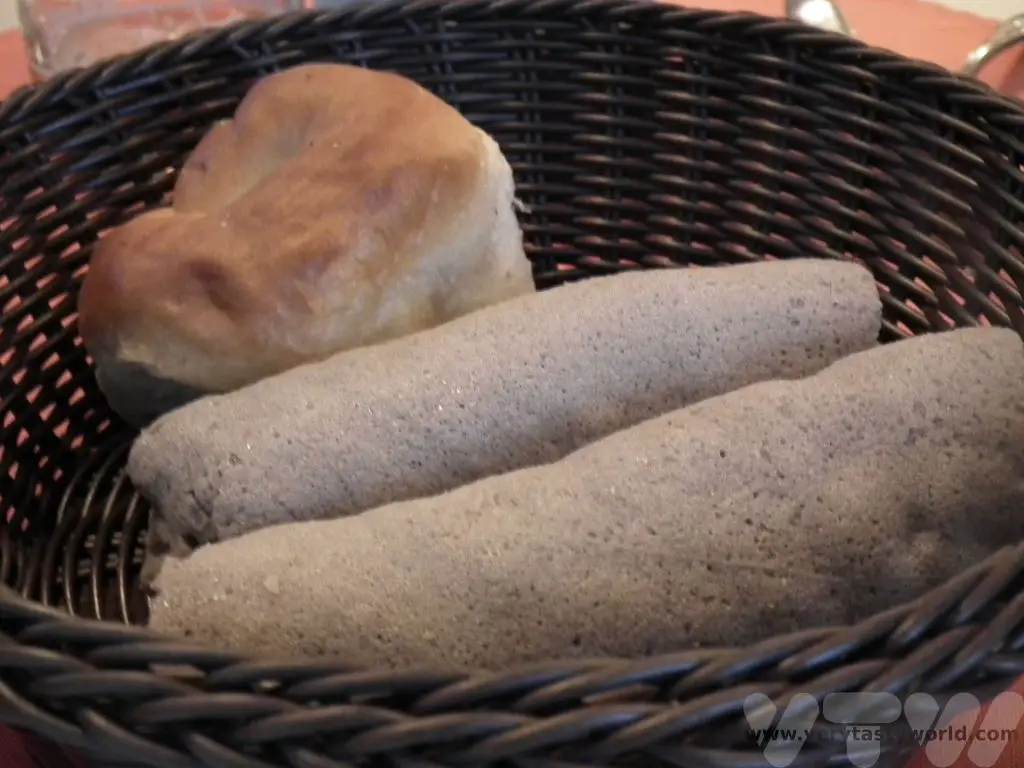
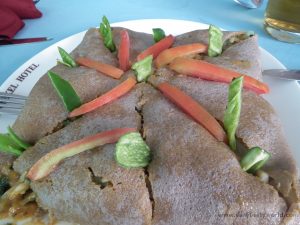
It really doesn’t look enticing at all. This was about as attractive as it got.
Actually, it tastes really good. It has soft texture and a slightly sour flavour. Injera is made from teff, apparently the world’s latest superfood – a grain that is highly nutritious. Injera is made using a fermenting process rather like sourdough or dosas. A combination of teff flour and water are combined to make a batter which takes a few days to ferment. When the mixture is bubbly and smells sour it is ready. It can be fried on a skillet (on one side only) until the characteristic bubbles appear in the surface.
It is often served laid out flat with stew (wat) or with meat and vegetables placed on top – you can pull off chunks of the injera to scoop up the stew. So it serves as plate, cutlery and delicious food.
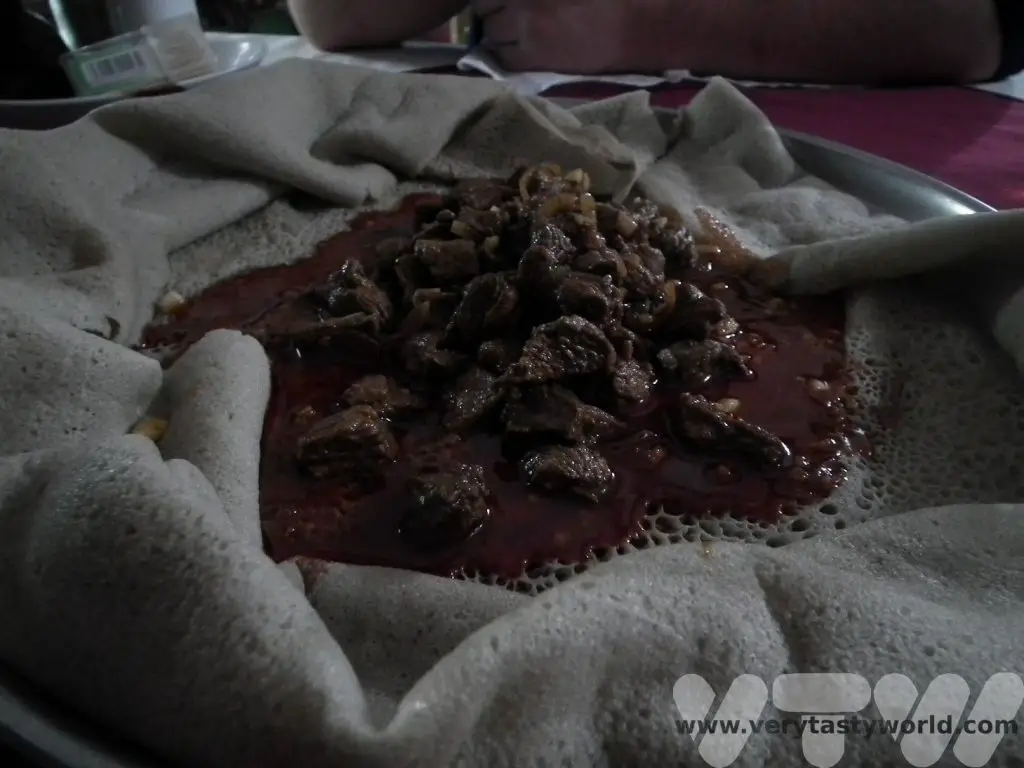
The local people we met were quite surprised that we were willing to eat injera and that we enjoyed spicy food.
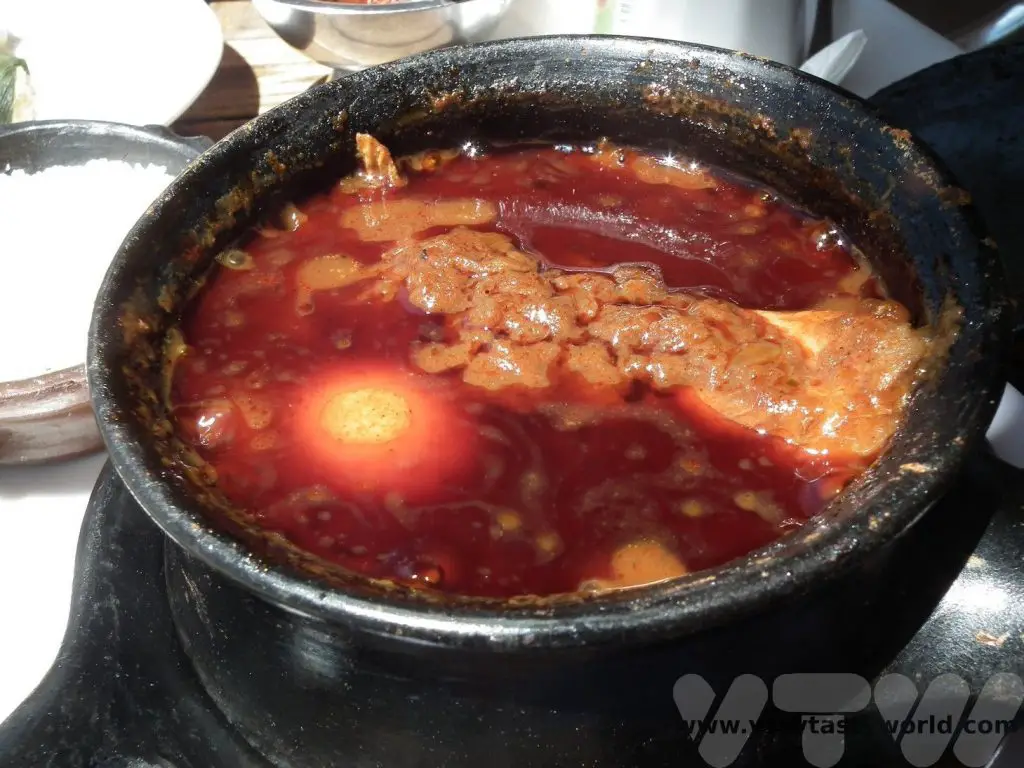
In the UK the county of Yorkshire is renowned for providing large portions of food. Ethiopian portions are so enormous that we quickly discovered that one meal between the two of us was more than enough to fill us up. We generally only needed to eat brekkie, then we shared all other meals.

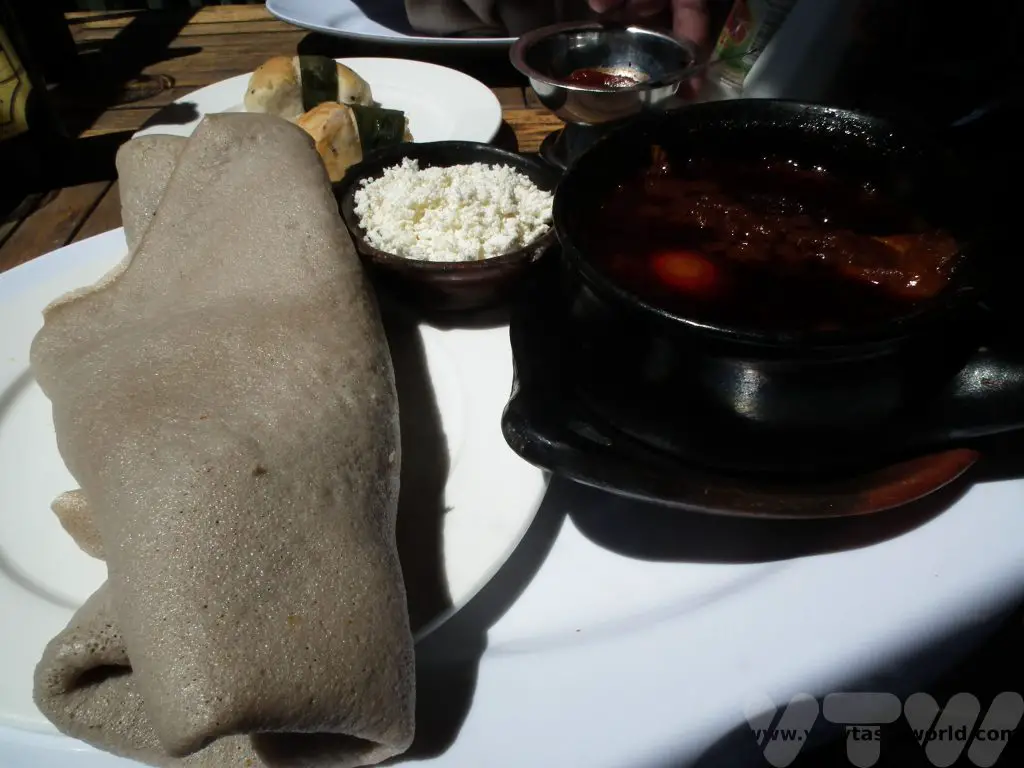
Ethiopian Coffee
Ethiopia can claim to be the country where the coffea arabica originates. Coffee has been grown in Ethiopia for centuries and it forms an important part of the culture.
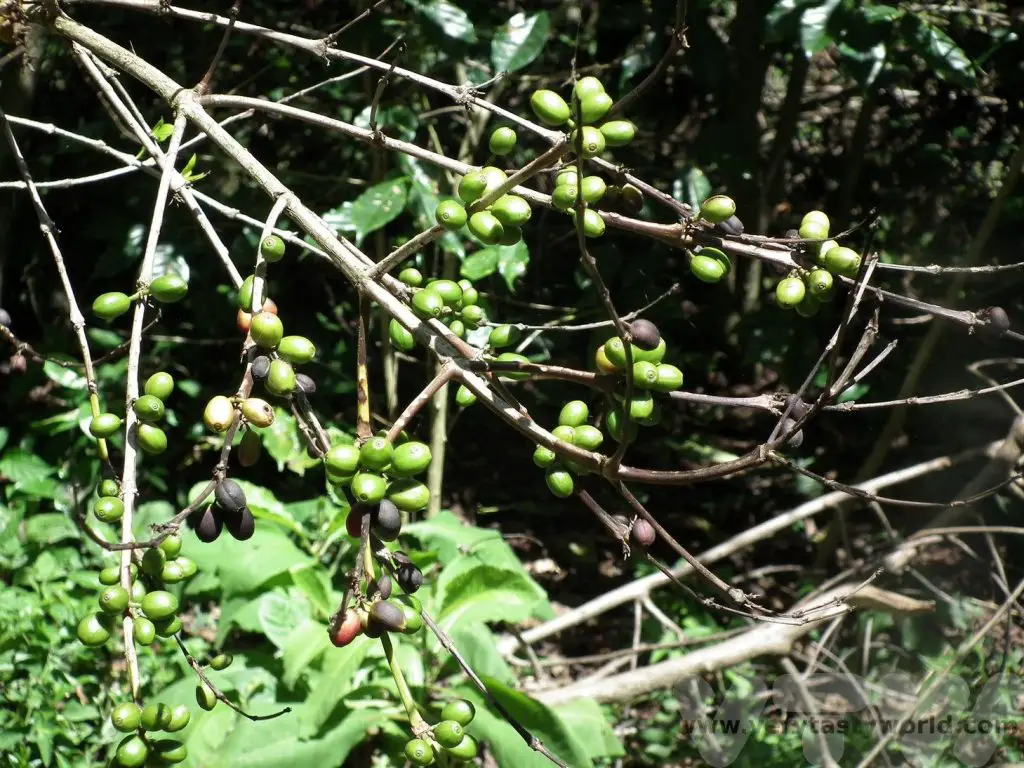
Coffee ceremony is highly social activity and the ceremony is usually performed by the female members of a household. The process starts with green coffee beans which are roasted in a pan over a flame and then ground using a mortar and pestle. Then the ground coffee is placed into a pot which has a spherical base and long neck and water added. It then boils on the flame so that the coffee can infuse and is then filtered using a sieve. The finished drink is poured from height into small cups. The grounds may be brewed a couple more times.
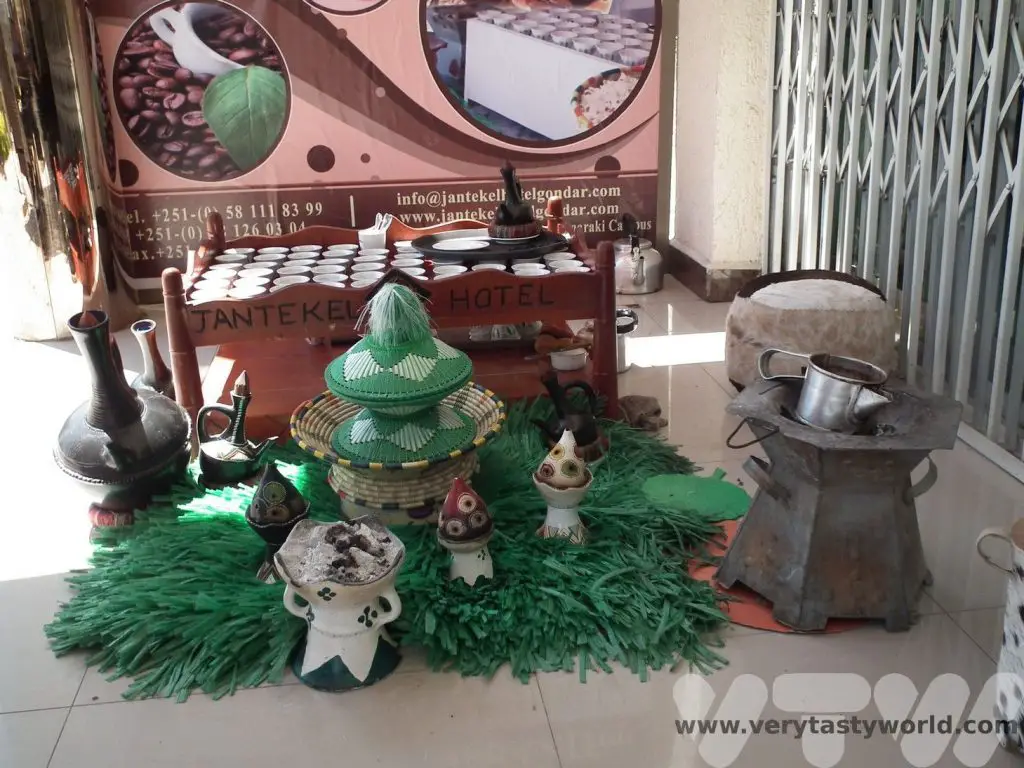
It is also possible to drink home-made beer in Ethiopia. Bars aren’t common in rural areas so you need to know someone local because the beer is only available in private homes. These are called tella places. We were lucky to have a guide who invited us to a tella place to enjoy the beer. It’s a beer brewed with teff or sometimes sorghum and the variety we tried was quite light – around 3%. Drinking beer in a home was a nice way to enjoy a tipple with local people.
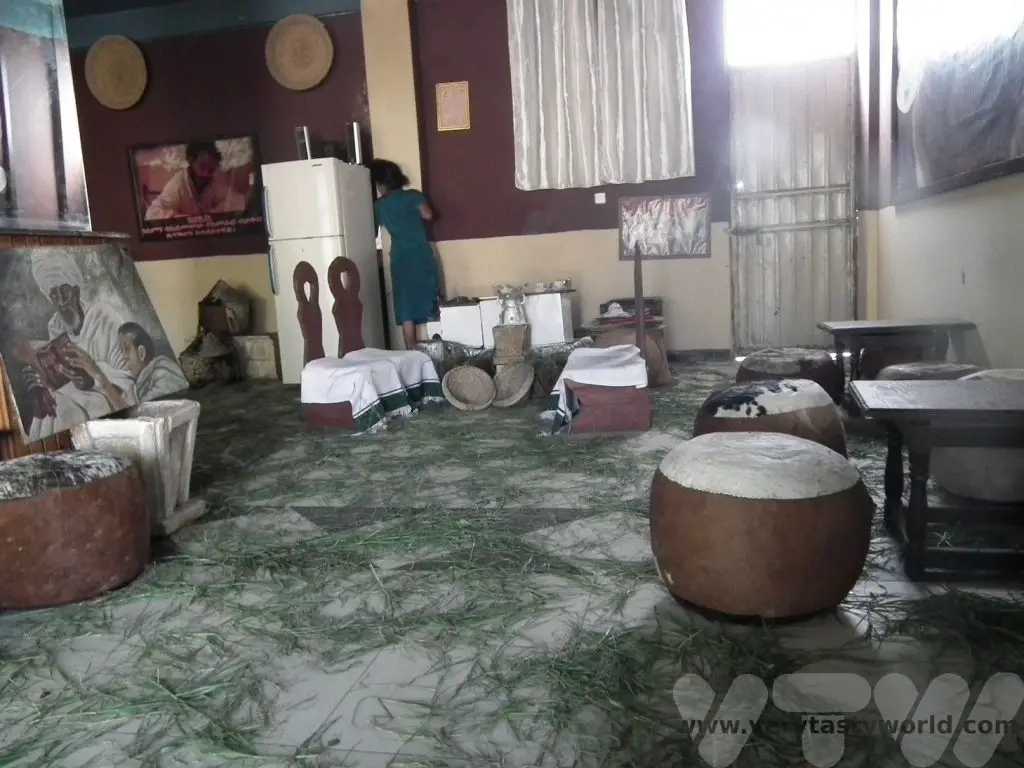
Some Interesting Facts About Ethiopia For Travellers
Because Ethiopia isn’t located too far from the equator daylight and nighttime are pretty much equal all through the year. The Ethiopian time system is very different to ours and uses a 12 hour clock. Sunrise, at 6am, is 12:00 dawn time. Night starts at 12:00 dusk, which is the equivalent to 6pm international time. While many tour guides will work on international time, it can get a little confusing if you are looking at a local clock, especially if you have a flight to catch.
Additionally, Ethiopia has thirteen months in its year. This means that, at the time of writing in 2023, it is still 2015.
Another interesting element to Ethiopian culture is that many people follow the Ethiopian Orthodox church and hence don’t eat meat on Wednesdays and Fridays. This is great for vegetarian/vegan visitors as there is a good selection of veggie food available. Ravenous meat-eaters don’t need to worry though, hotels and restaurants will still offer meat on those days.
Ethiopia has so much to offer – a fascinating history and culture, remarkable architecture and really beautiful landscapes and wildlife. We received a warm welcome wherever we visited and would love to return to explore the south of the country.
Related Posts You May Enjoy

- Mora Mora on the RN7 Madagascar – A Road Trip

- Tree Climbing Lions, Hippo Hordes and Safari Shenanigans in Uganda

- Tourist Attractions In Ethiopia

- Kibale National Park Chimpanzee Trekking

- Visit Ethiopia – Gondar and the Simien Mountains
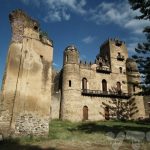
- Ziwa Rhino Sanctuary Uganda

The Lalibela Ethiopia Churches
Hewn From the Living Rock
When planning our visit to Ethiopia it was Lalibela’s rock churches that were top of the ‘must-see’ list. Lalibela is located in northern Ethiopia and you can fly direct from Addis Ababa, although we had spent some time exploring Gondar and the wonderful Simien mountains beforehand, so flew in from Gondar.
The town is named after the late-12th and early-13th century King Gebre Mesqel Lalibela of the Zagwe Dynasty, who was highly revered and was reputed to have commissioned the construction of the churches, but it is more likely that they were built over several centuries. Although the devout claim that holy angels played a part as well.
The churches, which were designated a UNESCO world heritage site in 1978, date from the 7th to the 13th centuries. They are remarkable because rather than being constructed from the ground up, they have been hewn from within the rock, using basic tools such as chisels and hammers, and were built from the top down and then carved from within. There are three main groups: northern, eastern and western. It will take more than a day to explore them thoroughly so make sure you factor in enough time.
You need to purchase a ticket at the main office – this is valid for five days. It’s not cheap but is definitely worth the price. You need to make sure that you keep your ticket as you may need to produce it when you enter each church. It’s generally okay to take photos (keep an eye out for signs indicating if photography is prohibited) but if you are taking photos of someone (and we found that many of the priests encouraged us to do so) it is polite to tip them.
We also recommend getting a guide as they will be able to tell you the history of each of the churches as well as point out some of the more interesting features. The churches are open from 8am-5.30pm, but are closed for two hours at lunchtime, around midday.
These are very much living churches, highly revered by Ethiopian Orthodox Christians, and a place for pilgrims to visit. We were welcome to join the services.
We explored each cluster of churches in turn. The churches within each group are linked by subterranean passages.
The Northern Group Of The Lalibela Ethiopia Churches
Biete Medhane Alem, believed to be the largest monolithic church in the world, at approx 33 metres long, 23 metres wide, and 10 metres deep, is home to the Lalibela Cross. It has five aisles and its name means ‘Saviour of the World’.
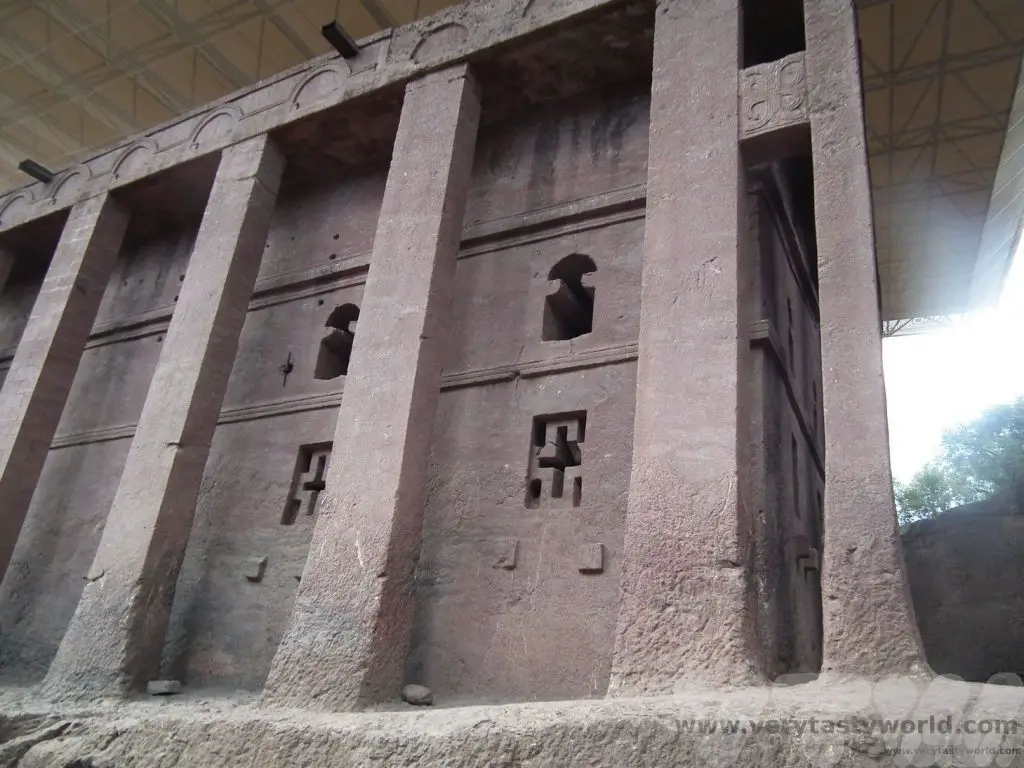
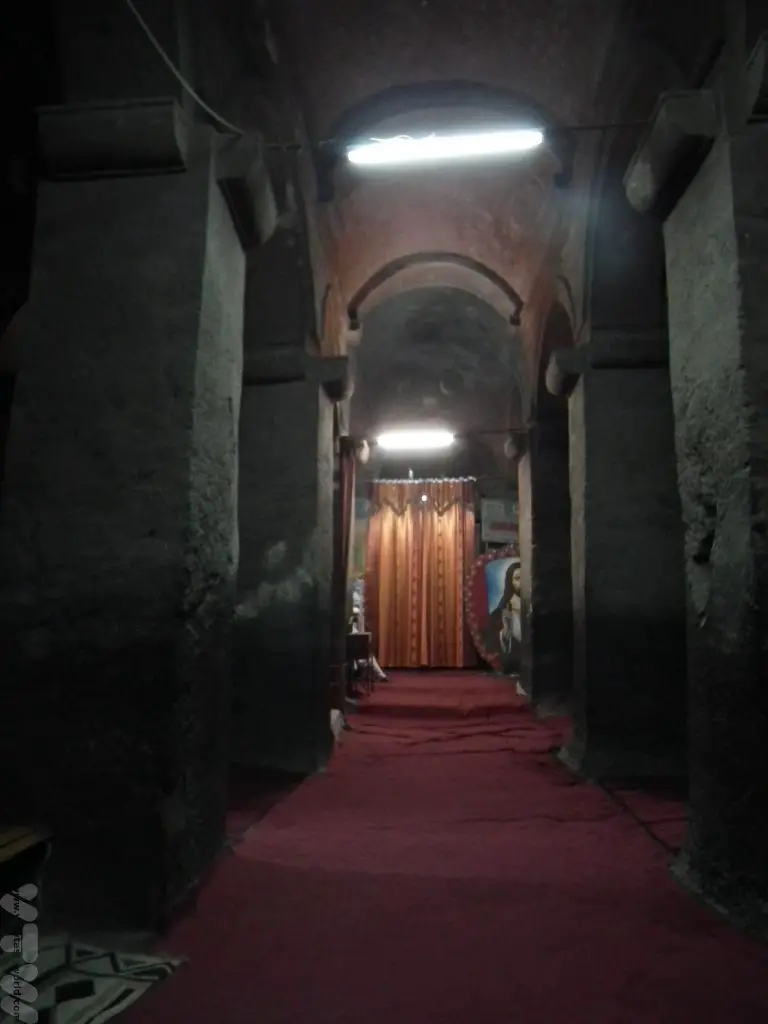
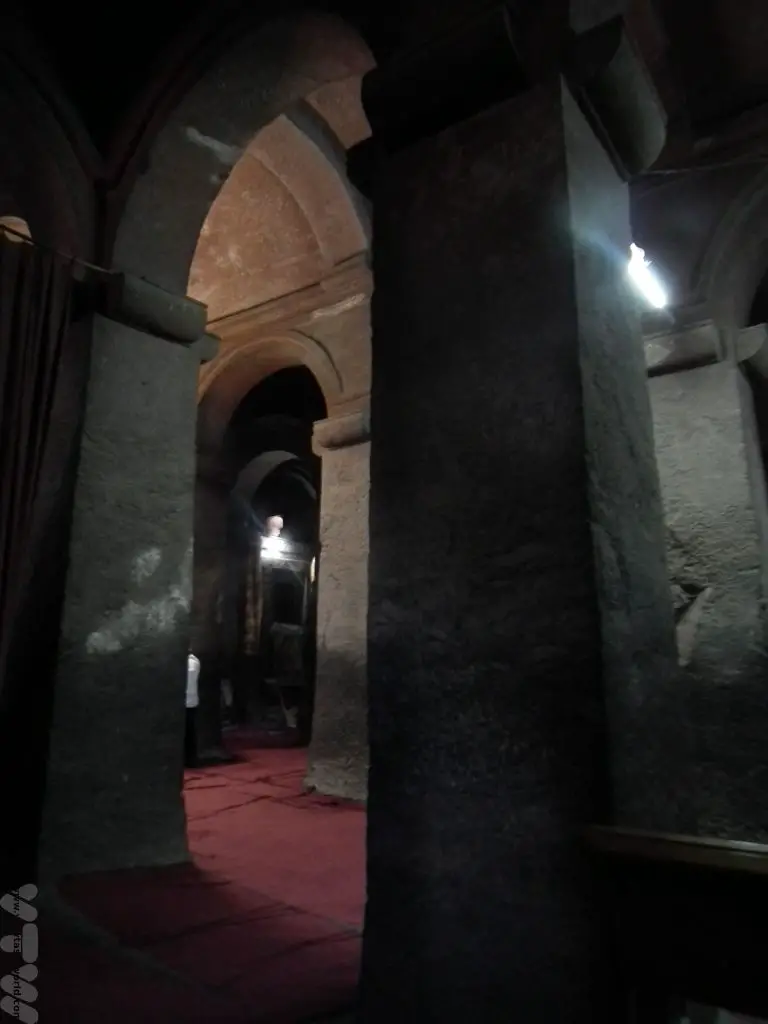
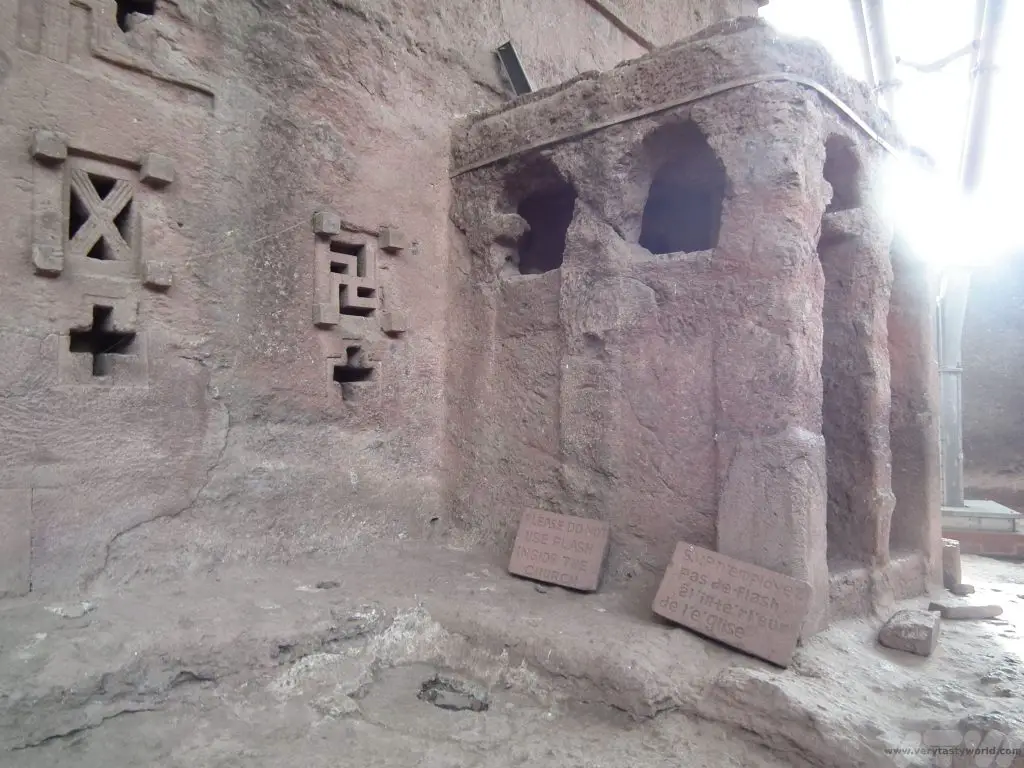
Biete Maryam may be the oldest of the churches, named for Mary.
It has an incredibly deep pool outside which is believed to grant fertility to any woman who bathes in it.
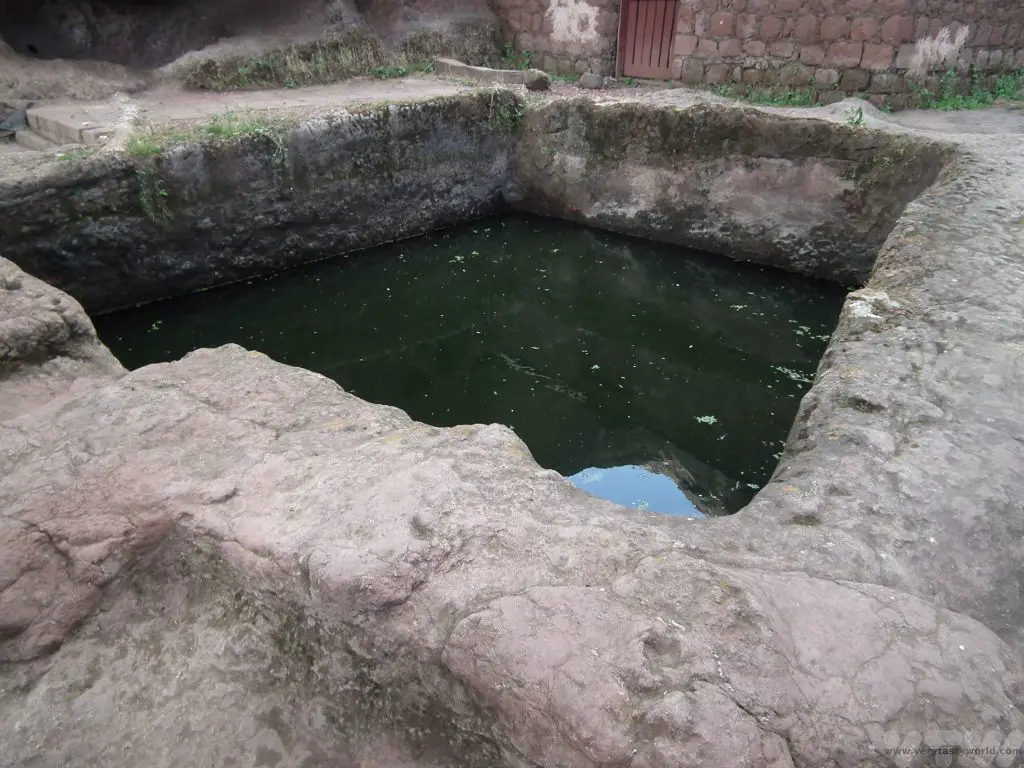
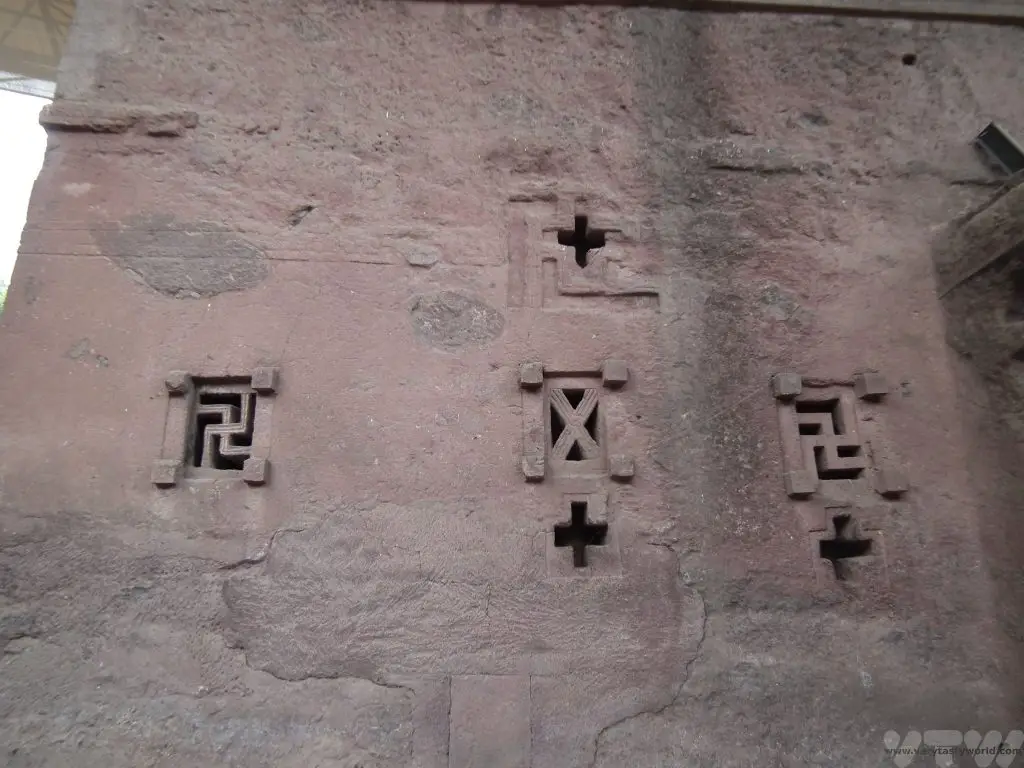
Biete Golgotha Mikael is said to contain the tomb of King Lalibela himself.
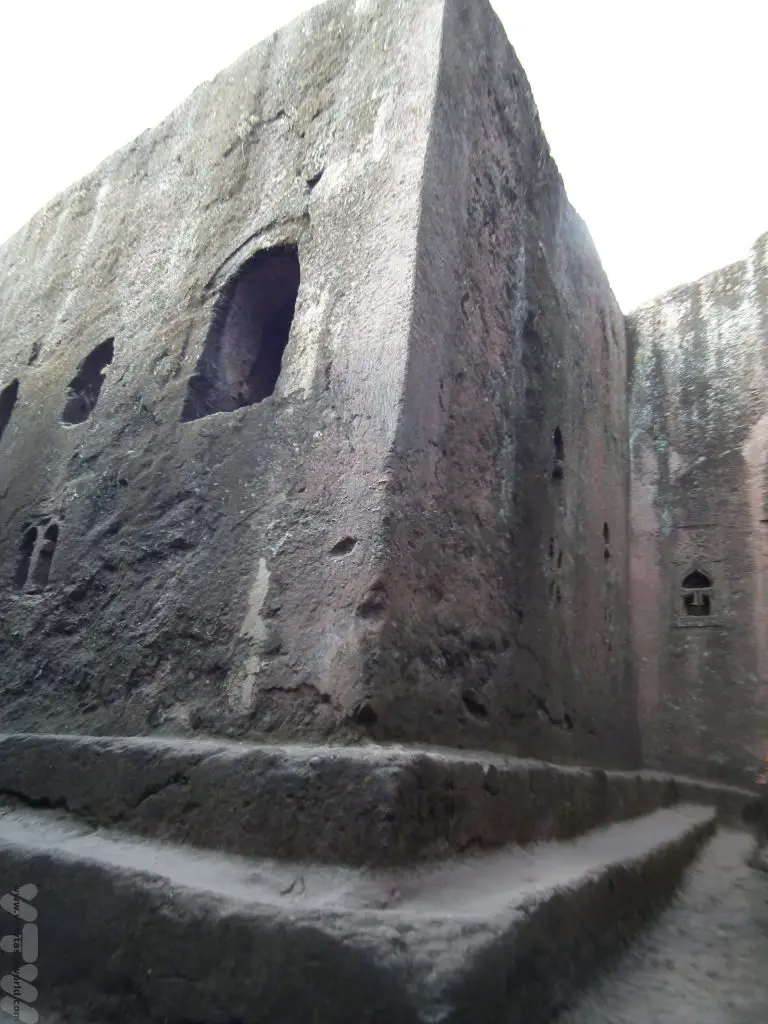
The Eastern Group Of The Lalibela Ethiopia Churches
It is thought that some The Eastern Group may have been used as royal chapels or palaces.
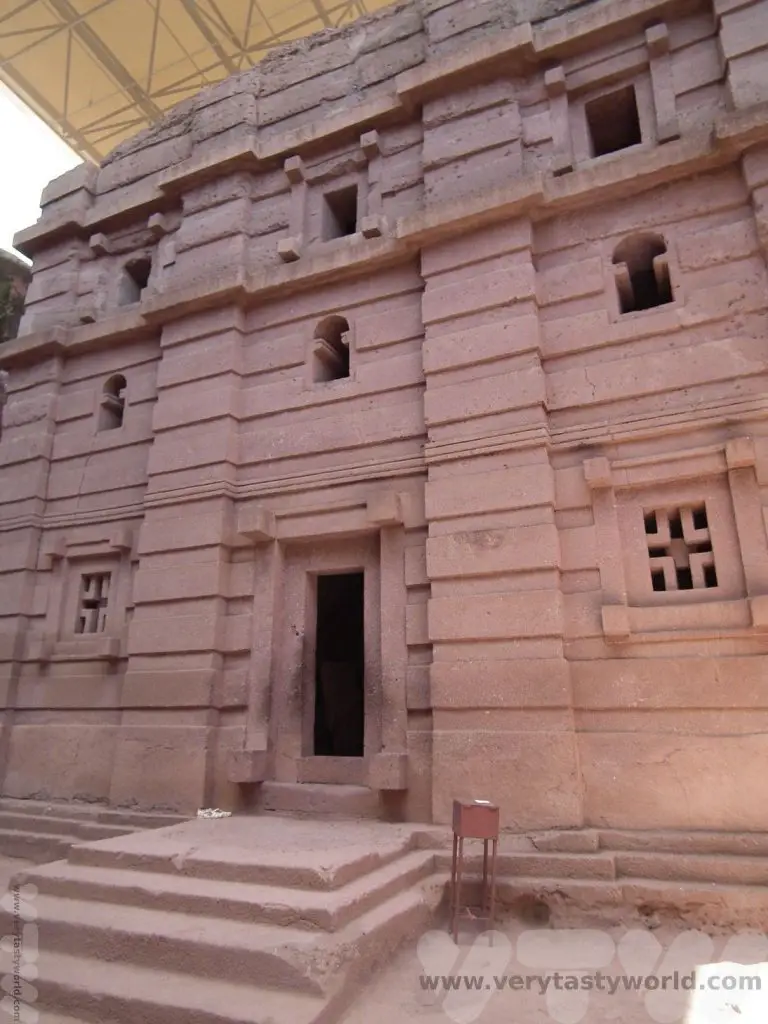
Biete Amanuel (House of Immanuel), possibly the former royal chapel.
At Biete Abba Libanos you can see how the church was carved downwards from inside the rock.
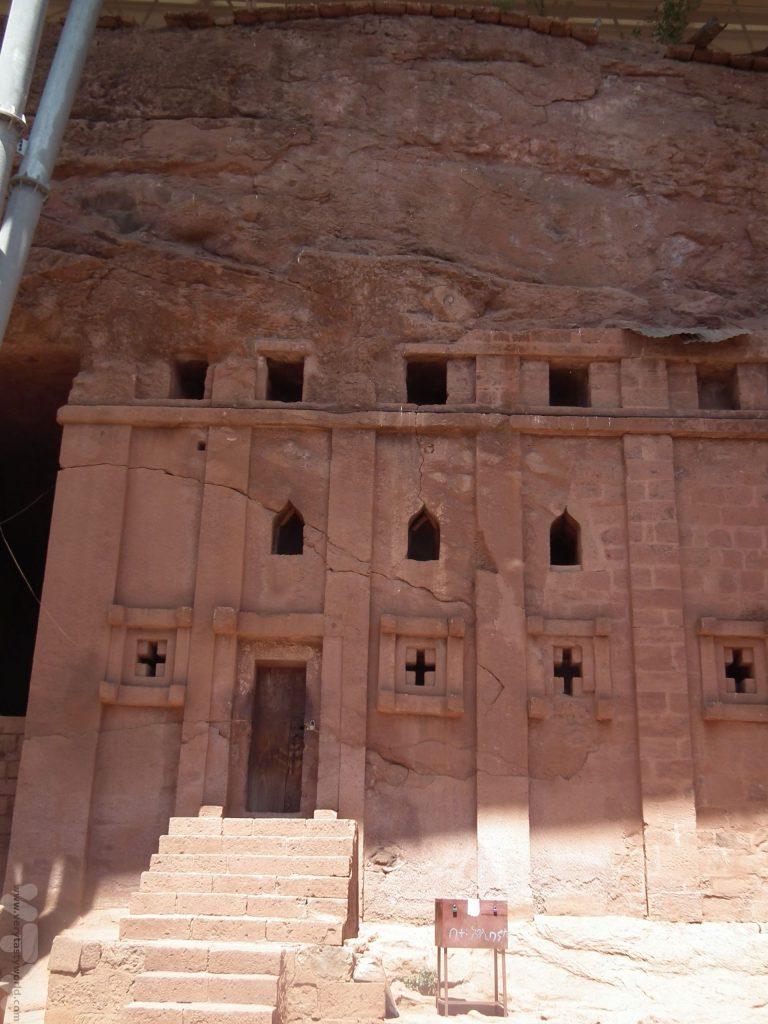
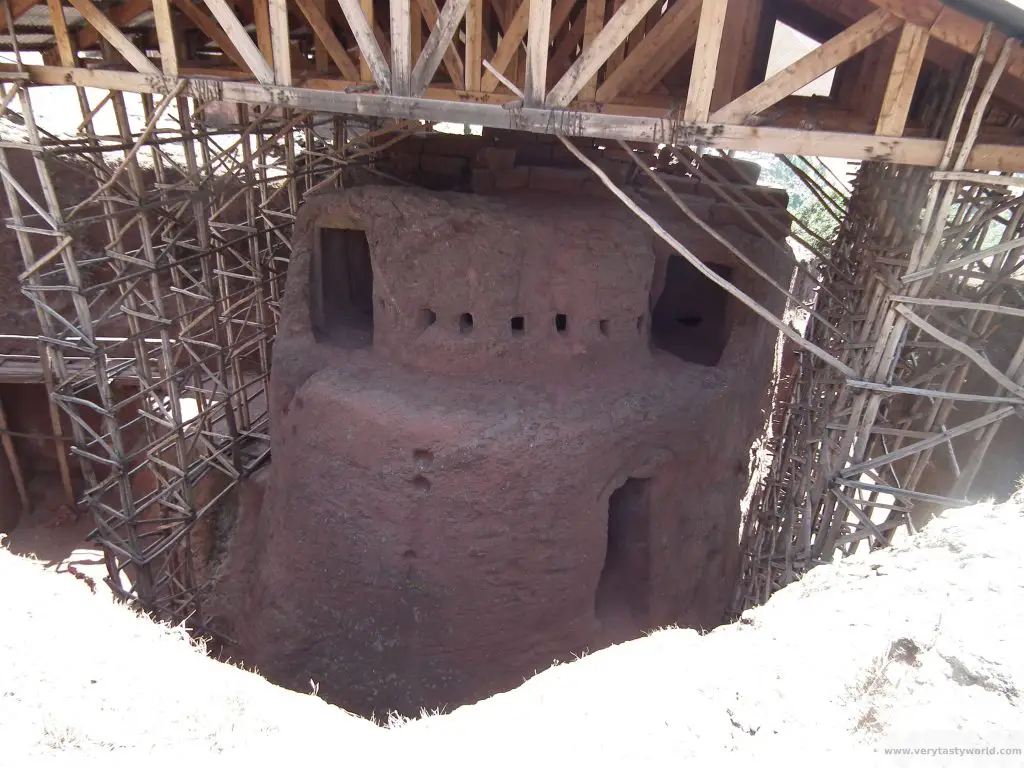
Biete Lehem is the house of bread.
The Western Group Of The Lalibela Ethiopia Churches
Last, but by no means least, Biete Ghiorgis, the church of St George, which takes a cruciform shape, and is the most beautiful of the churches.

You cannot see it on your approach, so well is it hidden. (Actually you have to be careful not to fall into the courtyard.)
It also appears to be totally inaccessible but there is a passageway carved into the rock behind the church and you walk through a tunnel to arrive at the main entrance.
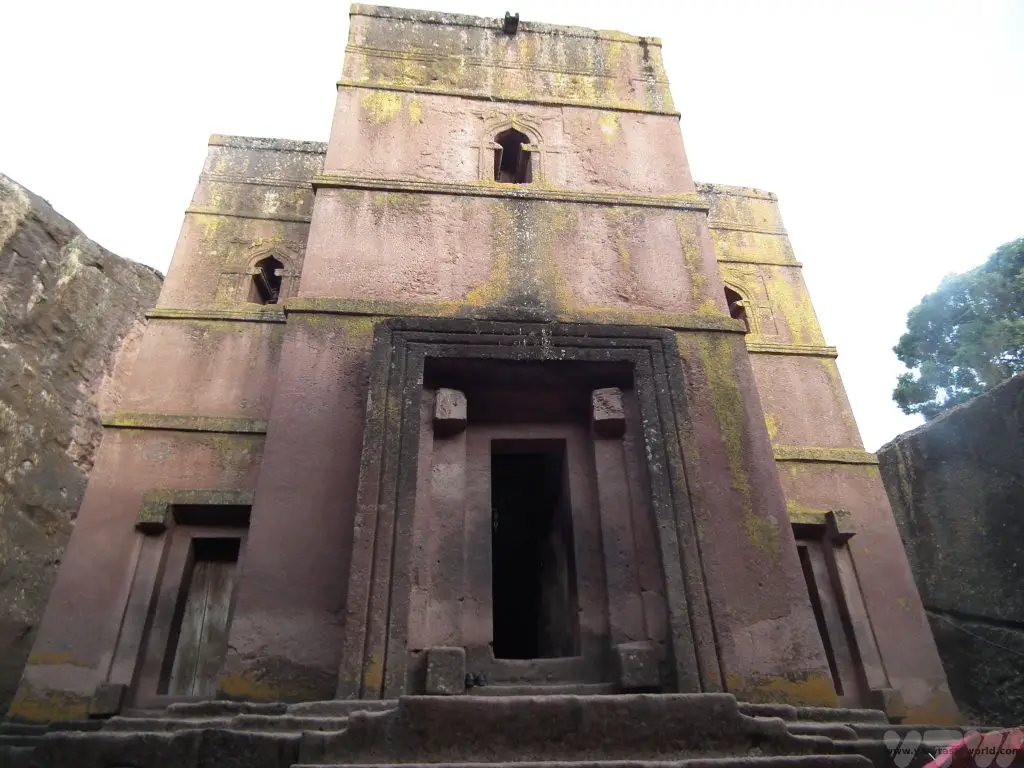
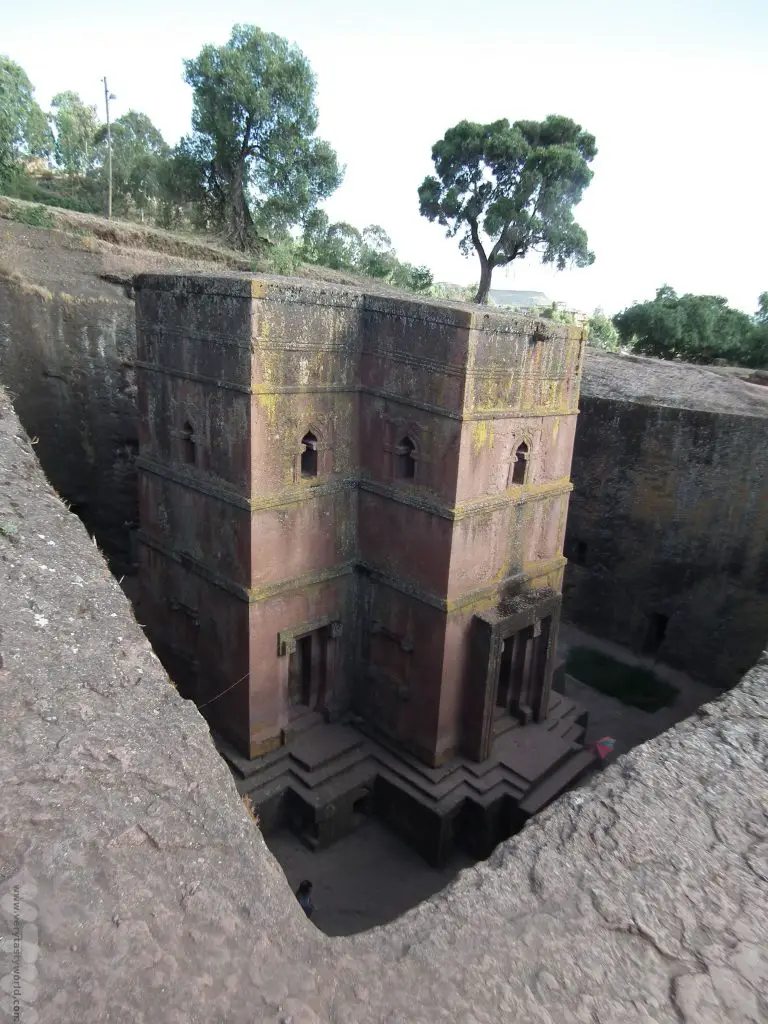
Day Trip from Lalibela
While you’re in the area, it’s also possible to visit Yemrehanna Kristos which is located around 20km from Lalibela. This would make for a pleasant morning or afternoon trip.
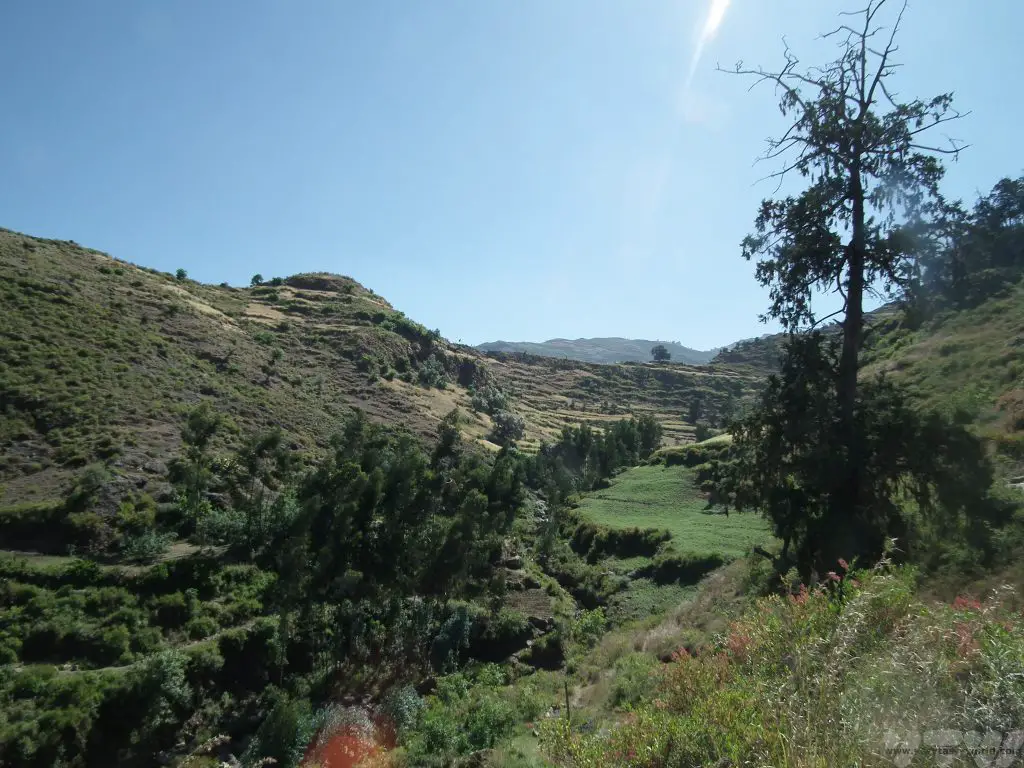
The church here is built inside a large cave on Mount Abuna Yosef. The church is named for Ethiopian king Yemrehana Krestos who reigned in the 11th Century.
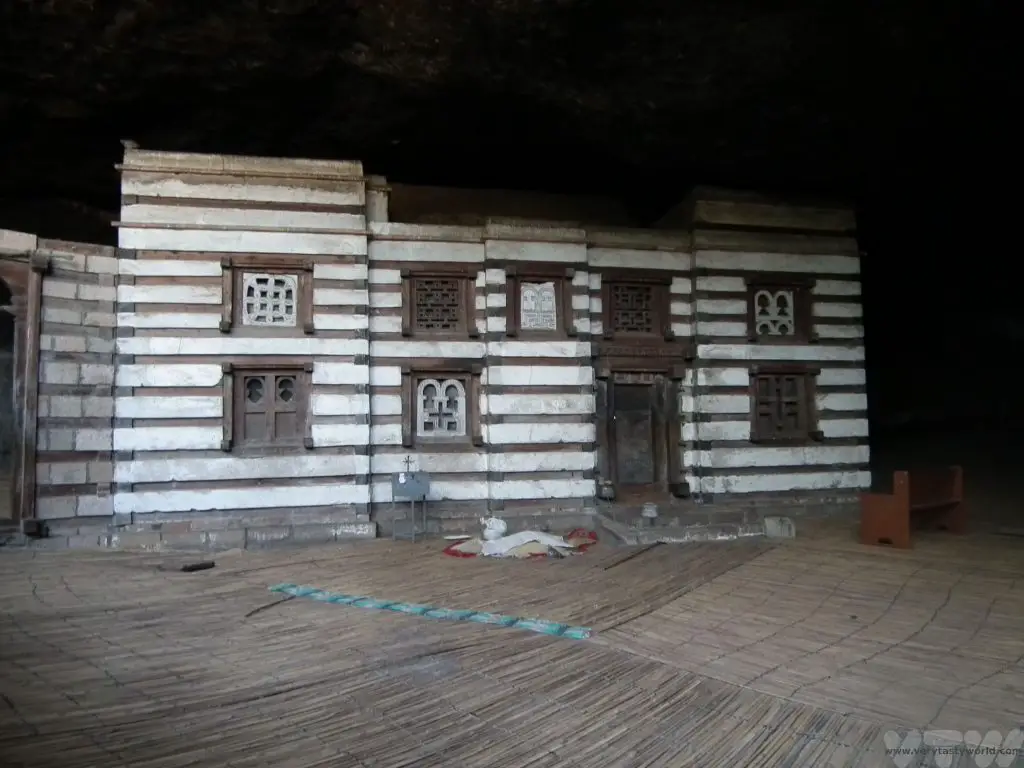
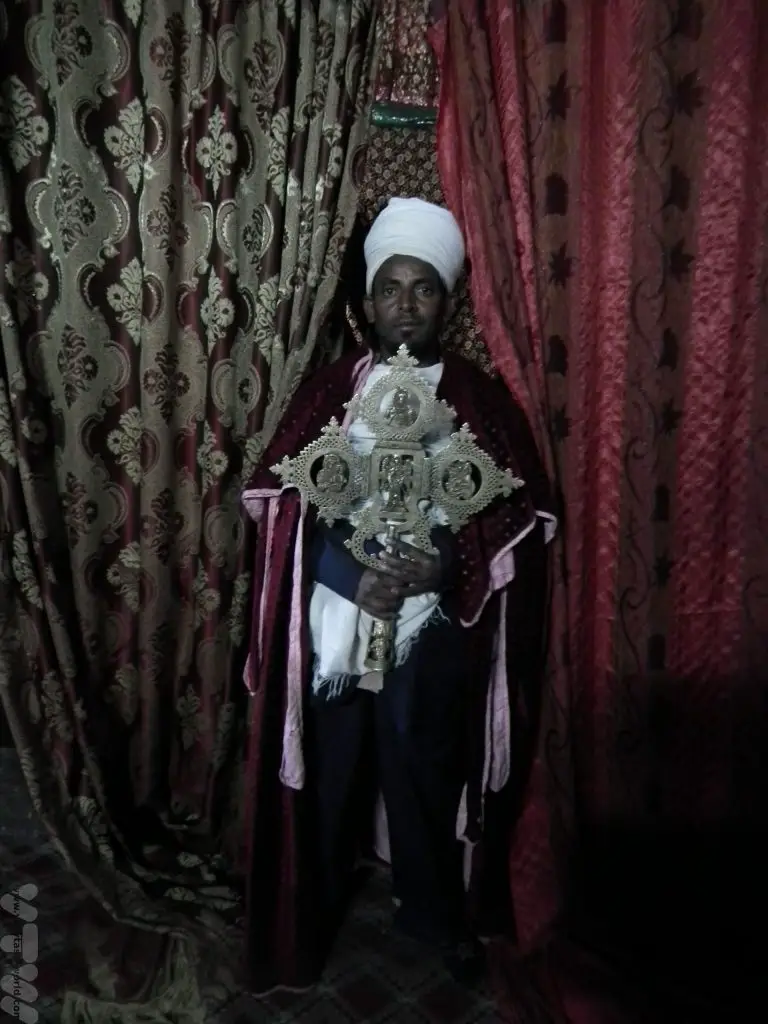
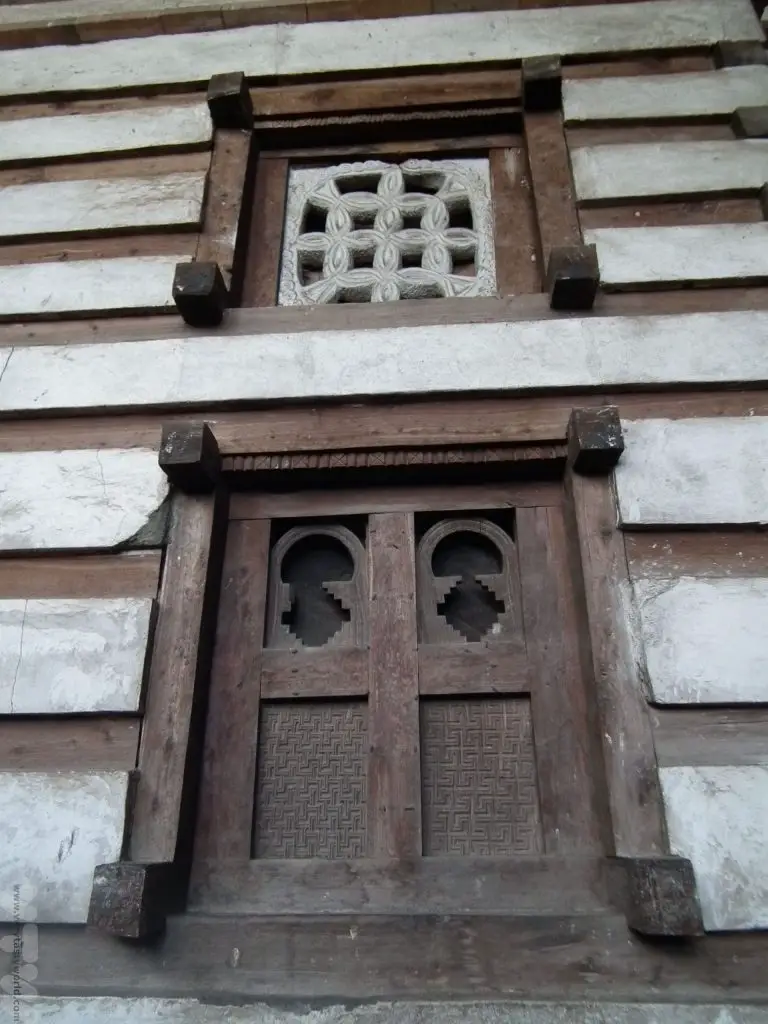
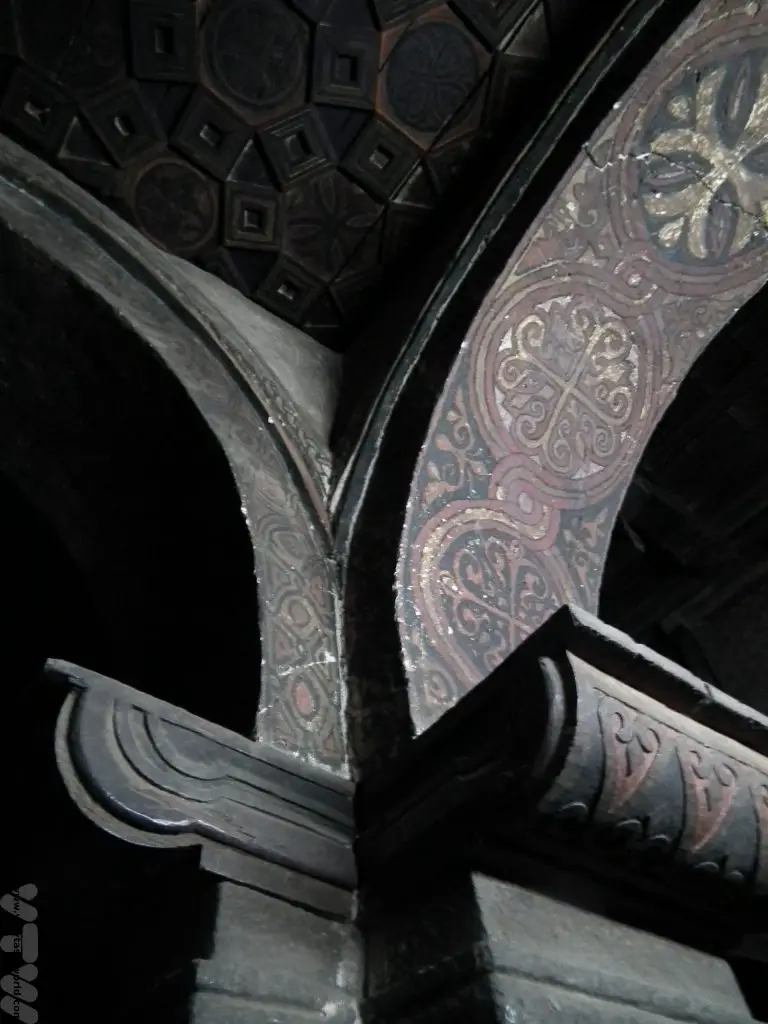
The area is known for its honey. There is a legend that Gebre Mesqel Lalibela was surrounded by a swarm of bees shortly after his birth. Apparently his mother believed it to be a sign of his future greatness. Whether the legend is true or not, make sure you get to taste the local honey, it is absolutely delicious.
And if you want a tip for a good restaurant at the end of the day’s sightseeing you can’t go wrong with Ben Abeba. The building has a highly unusual design and you can either sit indoors or outside – we recommend the latter as there are some splendid views, especially if you time your visit for sunset. The food on offer is slightly unusual – of course, you can have Ethiopian food, but somewhat surprisingly there are a number of Scottish dishes on the menu! The restaurant is run by a very friendly Scots lady who now lives in Lalibela.
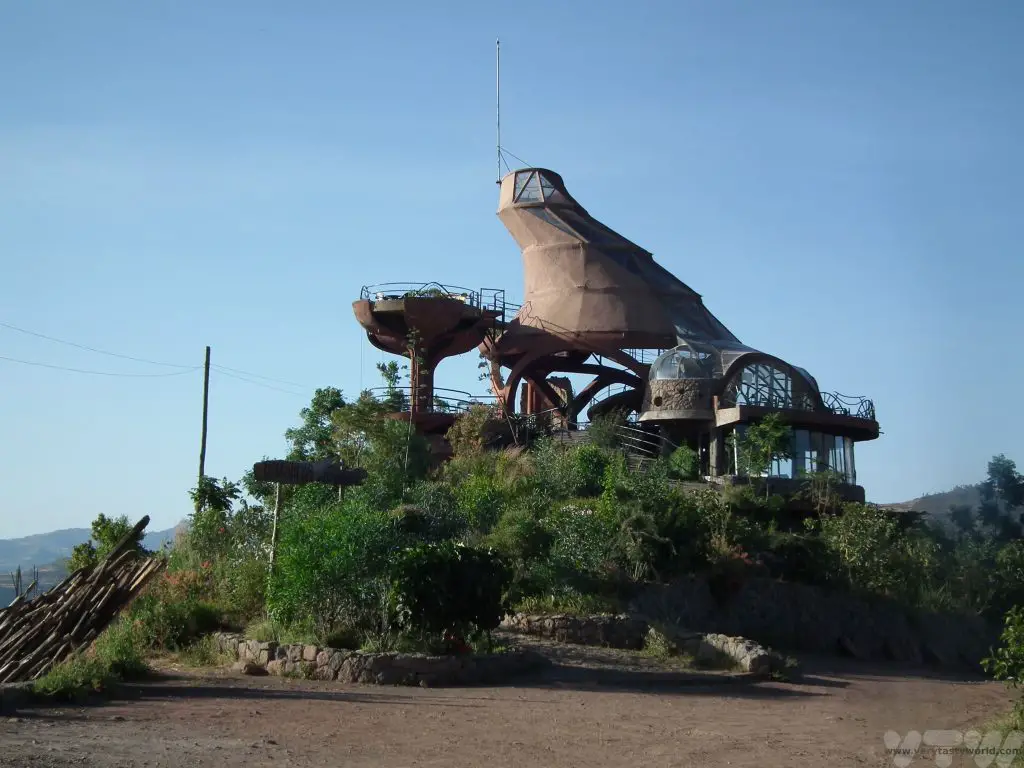
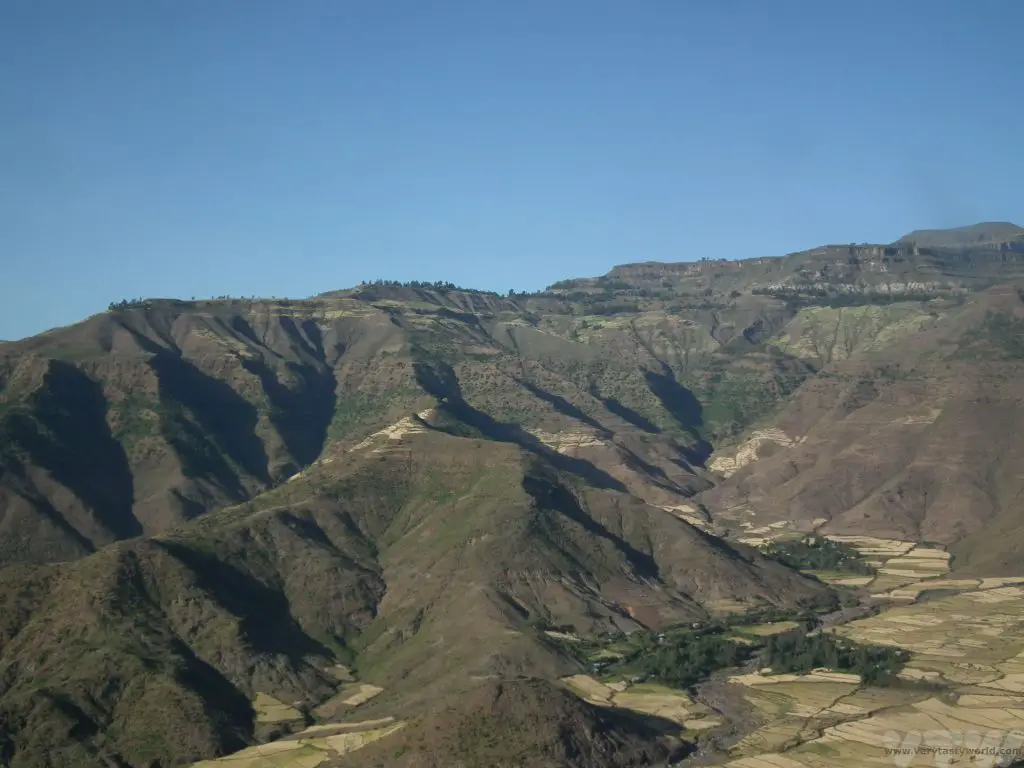
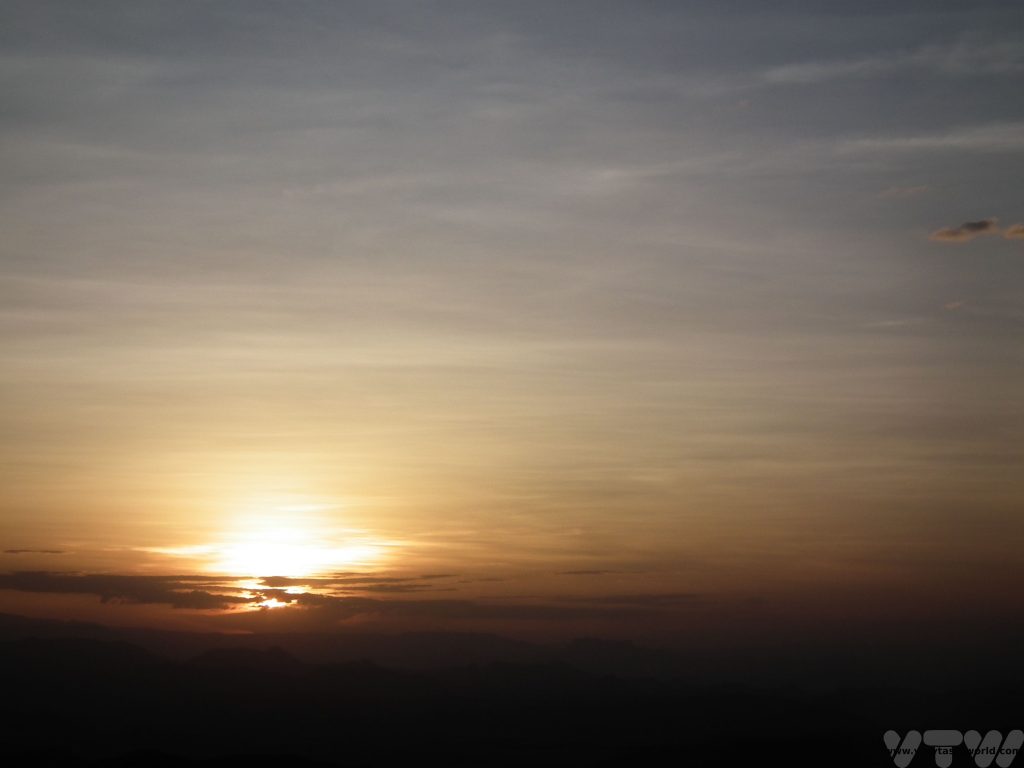
You can explore the Lalibela churches online via The Zamani Project who can offer several digital tours, including maps, photos, panoramas and 3D models of the site.

